#Henry Hope Reed Award
Text
Ben Pentreath, Driehaus laureate
A house designed by Ben Pentreath in Moscow. (Ben Pentreath Ltd.)
I believe I first heard of architect Ben Pentreath from a video called “Three Classicists” in which he, along with George Saumarez Smith, and Francis Terry drew, in 2010, a classical scene on the walls of the Kowalski Gallery, in London. It was videotaped in stop action, or time-lapse, shrinking the time of drawing to about three…

View On WordPress
#Adele Chatfield-Taylor#Ben Pentreath#Driehaus Prize#Francis Terry#George Saumarez Smith#Henry Hope Reed Award#Quinlan Terry#Richard H. Driehaus#University of Notre Dame
2 notes
·
View notes
Text
Henry Threadgill Continues Challenging Colleagues, Listeners, and Himself - JT
“I think that the greatest thing to have happened has been George Floyd.” What?
As an artist, Henry Threadgill has never shied away from provocation. The music he’s made over his 50-year career challenges listeners’ ideas of rhythm, harmony, form, and timbre. This, however, is—to say the least—an unexpected assertion. Especially from the 78-year-old multi-reedist, composer, and bandleader, whose personal manner is unfailingly gentle and cerebral (not to mention a little playful).
But after the initial shock, it’s clear that Threadgill is talking about the aftermath of Floyd’s 2020 murder by a Minneapolis police officer: protests, activism, and the United States’ public reckoning with race and inequality. That, to him, has been overwhelmingly positive.
“It’s kind of like the civil rights movement,” he says, speaking by phone from his home in New York. “All of a sudden, in the music world, all of these women composers, composers of color, and LGBTQ composers are being recognized. Look, I went last October to Alice Tully Hall for a concert of Missy Mazzoli, John Adams, and Anthony Davis. A woman, a white man, and a Black man; all three American composers. The place was packed! People went crazy—they got five curtain calls! And George Floyd, he was definitely a catalyst.”
Conscious as Threadgill is of history, as an improvising musician he thrives on being present in the moment. As it happens, this moment is a remarkable one for him. In 2021 he was honored as an NEA Jazz Master, the U.S.’s only formal national recognition for jazz musicians. He also released Poof, a 2021 album by his quintet Zooid—the band’s first since 2016’s became the third jazz work ever to win the Pulitzer Prize for Music.
Such honors are wonderful, Threadgill concedes, but he doesn’t let them go to his head. “I just put it out of my mind, you know. It never really gets in the way,” he says. “I think everybody wants to be recognized for what they do. But what really matters are the awards that are closer to the ground: from the musicians and the public. Because that’s who we play music for.”
He’s doing plenty of that in the present moment too. Currently, Threadgill is preparing new arrangements of Zooid pieces for a 2022 art exhibition in Paris; rehearsing a new composition for a pair of February multimedia performances at Brooklyn’s Roulette; writing a new commission for Zooid, two string quartets, and percussionist Ross Karre of the International Contemporary Ensemble (ICE); and continuing work on Passages, a long-in-the-making collaboration with sculptor Danae Mattes and choreographer Hope Mohr.
Multimedia projects are a frequent part of Threadgill’s output; the Chicago native is a pillar of that city’s Association for the Advancement of Creative Musicians (AACM), which encourages musicians to take a holistic view of the arts. Yet he isn’t just contributing soundtracks to visual and performing artists’ work: Threadgill also has two books being published in 2022. One is a collection of photographs and written reflections of New York during COVID; the other, cowritten with Brent Edward Hayes, is an autobiography. Once again, Threadgill keeps a toe in the past while planting himself in the present.
Released in September, marks 21 years since Zooid’s 2000 debut. The band’s instrumentation alone differentiates it from any other: flute and alto saxophone (Threadgill), acoustic guitar (Liberty Ellman), cello (Christopher Hoffman), tuba and trombone (Jose Davila), and drums (Elliot Humberto Kavee). There has been some variation across the years. Until recently, Zooid was a sextet with bass guitarist Stomu Takeishi; he was preceded by Tariq Benbrahim, an oud player. Neither version of the band brought it closer to convention.
Threadgill is very sensitive to timbre. Indeed, he has experimented with unique orchestrations since at least 1979’s X-75 (which featured four reeds, four basses, and vocals). But that’s only the most superficial of Zooid’s unique qualities.
The word zooid refers to a type of biological cell that is part of and connected with a larger grouping of cells, but can also move, function, and live independently of that grouping. So it is with the band: Threadgill supplies the basic compositions, but he asks the musicians to work both collectively and individually to help create new definition and contour for every performance. Thus, while Threadgill’s name is above the band’s, each of its players is a key presence.
Poof underlines this situation. Like predecessor , the album is a set of “concertos,” each of its five tracks a feature for one member of the band. “Now and Then,” for one example, spotlights Ellman. Though he interacts at points with Davila, Hoffman, and Kavee, he is unquestionably the lead voice throughout the track.
“Henry picks people to be in the group that he has faith in, and that have a unique voice that he wants to add to what he’s doing,” the guitarist says. “He’s very specific about what he wants to do with the music itself; he’s got a lot to say about describing the overall piece. But otherwise, you just have to figure out how to make it work and make music out of it—and how to make it sound like it belongs inside of his world.”
His world includes an idiosyncratic musical language based on intervals: the distance between the notes in the tempered scale. Asked to elaborate on his system, Threadgill demurs. “It’s too long and complicated,” he says. “It’s really far too much information for any kind of short conversation.” Pianist Myra Melford, who studied composition with Threadgill, takes a crack at it instead.
“Say you have three notes: C, G, E,” she explains. “The intervals in there are a perfect fifth, and a minor third, and a major third. I could transpose this figure by a major third, or by a minor third or a perfect fifth. I could play it backwards and have some of the same intervals. Things like that. You’re creating permutations from these ideas as a way of developing the material.”
If you can learn that system, adds Ellman, just about anything within it is fair game. “I remember showing up in the beginning, and kind of doubting whether I was doing what he wanted me to do,” the guitarist says. “I remember asking him, ‘Am I doing this right?’ He said, ‘Did I say you were doing something wrong?’ I said, ‘No.’ And he said, ‘Then you’re doing it right.’”
Then there’s the rhythmic matrix. Threadgill is renowned (and highly influential) for his complex and often overlapping beat cycles that make a tune’s pulse both palpable and impossible to count.
Davila notes, “There’s so much detail to the interior of the rhythm. Elliot,” he says, addressing his drumming counterpart in the band, “you look through his music and it’s numbers. It’s just numbers. I’ll look at his stuff and I’m like, ‘Yo! What is that?’”
“That’s true!” Kavee confirms with a laugh. “I’m doing these time cycles with different bar lengths, and I deal with them as sets of numbers. Say a cycle lasts 31 beats; there are bars of four, five, seven within that cycle. I can play them as written, or I can rearrange them, as long as they add up to 31.”
Threadgill also takes a modular approach to composition. Pieces usually have multiple sections; he keeps them fresh by creating new juxtapositions for each performance. Zooid’s Paris concert, part of an exhibition at the Bourse de Commerce’s Pinault Collection, will feature pieces from their catalogue, reworked in exactly this fashion. It requires the band to know the repertoire from the inside out, which in turn requires exhaustive rehearsal.
“We rehearse so much, it’s like boot camp,” Davila says. “For Poof, we rehearsed at least once a week for the two months before the record; he already had the music written, and we got together just to touch the music and get used to working together, workshop it. And then he always does a gig right before the recording, so by the time we get to the recording session we’ve nailed it.”
Threadgill doesn’t see the big deal with all that rehearsing. “That’s what you’re supposed to do!” He chuckles. “Sun Ra’s group, Duke Ellington’s group, all these people rehearsed all the time! That’s how you get good!”
Henry Threadgill at the New York Society for Ethical Culture, November 1997 (photo: Alan Nahigian)
A resident of Manhattan’s East Village since the early ’70s, Threadgill has had a front-row seat for the neighborhood’s gentrification. In 2020, he had a similar view of what one might call its de-gentrification: a mass exodus, and a bizarre one.
“With COVID, you got to remember, they had to let half the Metropolitan Opera go! Half!” he says. “And there was a limited amount of people they could keep on the Broadway shows. They have condominiums and co-ops—I’m talking about the new, young people in New York—with mortgages that all of a sudden they couldn’t pay.”
Threadgill found his neighborhood crowded with things he hadn’t seen there in years: moving trucks and “For Rent” signs. As he walked the streets, he also started seeing the detritus of lives left behind.
“Why would $5,000 speakers be sitting out and nobody was taking them? Why would a Panama hat worth $400 be sitting out on the street? Well, one reason is because there were no homeless people. They put all the homeless people in a hotel so they could keep them alive!” This, he notes, was different from what he’d seen after the last mass exodus, the White Flight of the 1960s and early ’70s: “That left the homeless people behind. This wasn’t reminiscent of that; it was reminiscent of a ghost town!”
It was an overwhelming spectacle, and Threadgill responded by taking photographs of what he saw. He also started writing, both abstract poetic responses to the imagery (“a kind of automatic writing”) as well as what ultimately became a novella. Finally, he collected all of it in a book titled Migration, or the Return of the Cheap Suit. “Underneath the title it says, ‘Pictures, words, and,’” he says. “I’m not claiming to be a photographer or a writer. I’m using words and I’m using photographs.”
Yet these new pursuits weren’t enough on their own for Threadgill. His work demands a complex, layered presentation. And so he incorporated the words and images into a multimedia spectacular to take place over two nights at Roulette.
Actually, it’s two multimedia spectaculars: “One” and “The Other One.” Each night will begin with a different 18-minute film of a performance by a Threadgill ensemble, both at different galleries and with different pieces of music. (These, too, have complementary titles: “Plain as Plain in Plain Sight” and “Plain as Plain but Different.”)
Following each film will be a live performance of a new piece, “Of Valence,” by a special 12-piece ensemble: piano; violin; viola; two cellos; tuba; tenor saxophone; two alto saxophones, with one alto doubling on clarinet; two bassoons; and a percussionist working with trap drums and electronics. While the ensemble plays the piece—dedicated to drummer Milford Graves, among jazz’s many losses during the pandemic—Threadgill will sit behind a revolving set of full-body masks, offering readings from Migration as well as vocalizations both live and recorded onto tape loops.
“I’m only doing vocal work,” he says, adding with a laugh, “This will be my debut doing vocalese.”
“Everybody’s got a cellphone that they don’t pay for, and some expensive gym shoes, but they say, ‘Oh! Twenty dollars! That’s too much for a record.’”
Migration isn’t Threadgill’s only forthcoming stab at publishing. Summer 2022 will see the issue of Easily Slip into Another World, an autobiography that Threadgill assembled with the assistance of writer and scholar Brent Hayes Edwards. The project came out of another long-term one that Edwards has been working on: a history of New York’s 1970s “loft jazz” movement, in which Threadgill was a participant.
“I’ve been doing oral histories,” says Edwards, a professor of English and comparative literature at Columbia University. “Henry was one of the first musicians I interviewed. We met and talked a couple of times, and then he actually suggested—he was the first to say it: ‘Let’s do a full oral history. Not just an interview about 1976 and my sense of the downtown scene in Manhattan, but let’s sit down and do a thorough series of interviews about my life.’ And who’s going to say no to Henry Threadgill when he says that?”
That initial conversation took place around 2010. It led to multiple, hours-long conversations spanning a decade. “We really took our time going through the various stages of his life,” Edwards says. “Of course, one’s memory doesn’t work in a linear, chronological fashion, so we jumped around a little bit, but we progressed up to the present, including his development as a composer and an instrumentalist and the various groups that he’s led. He’s had a very long and varied and complex career.”
As Edwards worked to transcribe the interviews, calling Threadgill to fill in gaps and elaborate on ambiguous passages, it was again the musician who suggested a more ambitious undertaking. “Maybe we should do something formally with this,” he said. “Not just record a bunch of interviews but put it together and formalize it.” He didn’t want other voices to be woven in and out of the narrative, as in Dizzy Gillespie’s To Be or Not to Bop or Randy Weston’s . “I want it to be my story, in my voice.”
In a parallel to his compositional work, Easily Slip into Another World—titled after Threadgill’s 1987 album with his then Sextett—is constructed in a modular mode, with parts interchanged and reordered. “I’m trying to give it some of the formal experimentation that his music has, but not lose the idiosyncrasy and the power of his voice,” Edwards says. “He’s charismatic, funny, and a great raconteur of his own life! He’s such an incredible talker, and you don’t want to lose that.”
As for Threadgill, he appreciates the platform to say some things about not just his own life, but the music industry—and its audiences. “We have created a culture of take and don’t pay,” he says. “They got more money than we ever saw, young people do. Everybody’s got a cellphone that they don’t pay for, and some expensive gym shoes, but they say, ‘Oh! Twenty dollars! That’s too much for a record.’
“I remember, we would save our money to buy albums when I was a kid. One kid would get it and everybody would rush to their house. ‘He got Gene Ammons!’ We’d all say, ‘What?’ And go tearing down the street to their house and ring the bell. We were in grammar school. Nobody had a job, we would either save our pennies or borrow from each other. ‘Man, give me a quarter, will you? For 25 cents more I can get that record.’ It was fun!”
Henry Threadgill playing tenor at the Village Gate, New York, June 1984 (photo: Alan Nahigian)
All this is just Threadgill’s work that’s in the can. There’s more still to come.
In June, he has an engagement at Detroit’s Orchestra Hall. Zooid, ICE percussionist Ross Karre, and two string quartets will premiere a new work—so new that Threadgill has yet to write a note. “I have to start!” he reminds himself. “I got a lot of work to do on that. I’m running behind because of this [Roulette] multimedia piece. But I’ll get it done. It’ll come together; I’m not worried about that.”
He’s also involved in a tripartite collaboration with California sculptor Danae Mattes and choreographer Hope Mohr called Passages. “Hope has been a big fan of my music and she just called me out of the blue and said she hoped we could do something together,” Threadgill recalls. “Then when I was in California, I met Danae and I told her about Hope, and the three of us got together and it was love at first sight!”
Threadgill has been working with dancers ever since his days in Chicago. He’s on new ground when he combines music and dance with Mattes’ sculptures, which feature large expanses of hand-shaped clay structures. The three found an unlikely common bond, however: improvisation.
“I do process pieces,” Mattes explains. “I create the form, which is like a huge basin, and then I create walls and structures. Then I pour liquid clay into the interior of the form, and then there’s this moment where the structure could completely dissolve or it could hold. So much water has to leave the body of the clay to accept the incoming clay, and then when that starts to happen, there’s this fine line where it’s almost gelatinous, so you have the exterior walls, let’s call them, where structures are absorbing the water, and it’s almost neither liquid nor solid form.”
“I remember asking Henry, ‘Am I doing this right?’ He said, ‘Did I say you were doing something wrong?’ I said, ‘No.’ And he said, ‘Then you’re doing it right.’”–Liberty Ellman
That’s when the dancers come in. They will move about the clay, both following Mohr’s choreography and improvising in response to the environment and to Threadgill’s music. (The band, featuring members of Zooid and ICE, will be unseen during the performance.) “Actually they’re completely covered in clay at one point,” Mattes says. “They are very claylike themselves.” Embodying the music, they will also determine the final form of the sculpture, whether through footprints, body impressions, or air pockets.
“While they push a form away from its original place, it’s all going to be integrated into the motivations of the music. It’s an incredible thing to witness,” Mattes says.
The project has been delayed due to COVID, but Threadgill is determined to see it through. “I don’t care how long it takes, it’s gonna happen,” he says. “I’m committed to that.”
That commitment is par for the course with an artist like Threadgill, who has already created a lifetime’s worth of work that is thoughtful in its spontaneity, disciplined in its free forms. Process is a part of his art as well, as much in developing his compositions as in his improvisations. Like his statement about George Floyd—or a troupe of dancers rolling around in clay—what initially seems baldly provocative reveals itself to bear nuanced, carefully considered ideas, presented in shrewd and innovative ways.
“He’s continuing to develop his ideas and evolve all the time, and trying all these new things,” says Melford. “He’s so inspiring.”
This content was originally published here.
1 note
·
View note
Text
THE BIG STREET
August 13, 1942
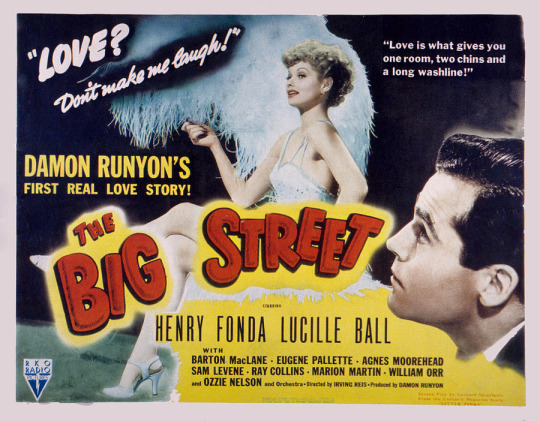
Producer: Damon Runyon
Director: Irving Reis
Screenplay: Leonard Spigelgass, based on the short story “Little Pinks” by Damon Runyon, first published in Collier’s magazine.
Dance Staging: Chester Hale
Gowns: Renie
Miss Ball’s Dancing Costume: Freddy Wittop
Miss Ball’s Make-Up: Perc Westmore
The film is sometimes referred to as Damon Runyon’s The Big Street.
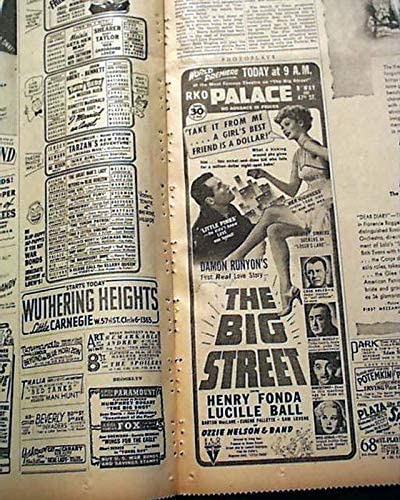
The film premiered in New York City at the RKO Palace on August 13, 1942. That same day Disney’s long-awaited Bambi opened at Radio City Music Hall. At the Capitol, Orson Welles’ The Magnificent Ambersons, also starring Agnes Moorehead and Gil Perkins, continued its run. Nearby, at the Albee, a second-run cinema, Top Hat (1935) starring Ginger Rogers and Lucille Ball was playing. The Big Street opened nationally September 4, 1942.
“Love is something that gets you one room, two chins, and three kids.” ~ Gloria Lyons (Lucille Ball)
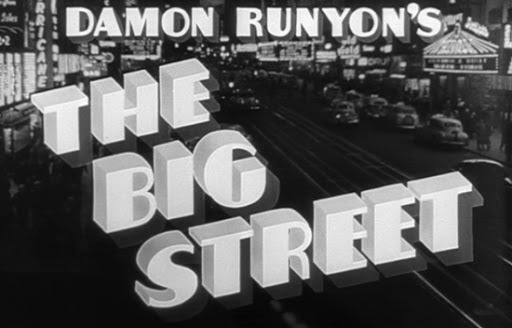
PRINCIPAL CAST
Lucille Ball (Gloria Lyons aka ‘Her Highness’) was born on August 6, 1911 in Jamestown, New York. She began her screen career in 1933 and was known in Hollywood as ‘Queen of the B’s’ due to her many appearances in ‘B’ movies. With Richard Denning, she starred in a radio program titled “My Favorite Husband” which eventually led to the creation of “I Love Lucy,” a television situation comedy in which she co-starred with her real-life husband, Latin bandleader Desi Arnaz. The program was phenomenally successful, allowing the couple to purchase what was once RKO Studios, re-naming it Desilu. When the show ended in 1960 (in an hour-long format known as “The Lucy-Desi Comedy Hour”) so did Lucy and Desi’s marriage. In 1962, hoping to keep Desilu financially solvent, Lucy returned to the sitcom format with “The Lucy Show,” which lasted six seasons. She followed that with a similar sitcom “Here’s Lucy” co-starring with her real-life children, Lucie and Desi Jr., as well as Gale Gordon, who had joined the cast of “The Lucy Show” during season two. Before her death in 1989, Lucy made one more attempt at a sitcom with “Life With Lucy,” also with Gordon.
Gloria’s singing voice was provided by Martha Mears, who also did Ball’s singing in DuBarry Was a Lady (1944).
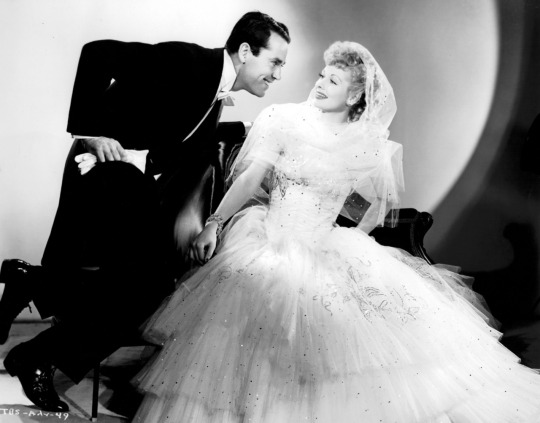
Henry Fonda (Augustus Pinkerton II aka ‘Little Pinks’) first worked with Lucille Ball in the 1935 film I Dream Too Much. When Lucille Ball first got to Hollywood, the two actually briefly dated. They collaborated on the TV special “The Good Years” (1962) and the film Yours, Mine and Ours (1968). During the 1970s, Fonda and Ball often turned up on the same awards and tribute shows. Fonda was nominated for three Oscars, winning in 1982 for On Golden Pond. He also won an honorary Oscar in 1981. Fonda died in 1982 at age 77.
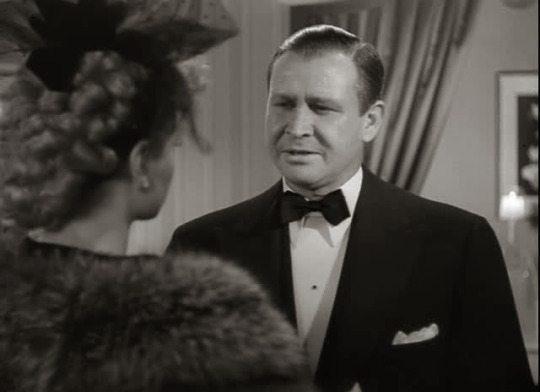
Barton MacLane (Case Ables) was seen in the film The Maltese Falcon (1941) but is probably best remembered for his final role, the blustery General Peterson on “I Dream of Jeannie” (1965-69).
“A fat man’s always listening to love stories, but he’s never go any to tell.” ~ Nicely Nicely Johnson
Eugene Pallette (Nicely Nicely Johnson, The Greatest Eater Alive) was seen as Friar Tuck in Robin Hood (1938) and in Mr. Smith Goes To Washington (1939).
The character of Nicely Nicely Johnson was played by Stubby Kaye, who reprised the role he played on Broadway, in the film version of Runyon’s Guys and Dolls (1955). He was so named because his usual reply to the question “How are you doing?” was typically “Nicely nicely, thank you!”
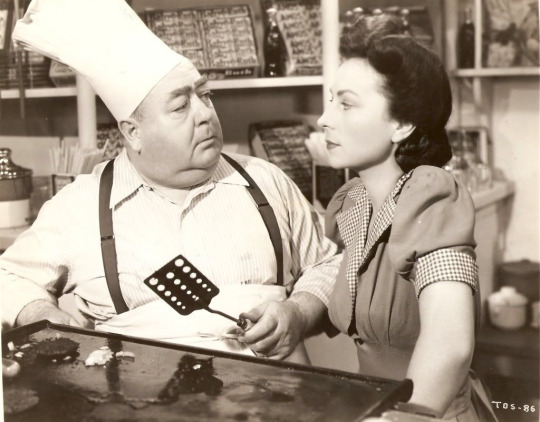
Agnes Moorehead (Violette Shumberg) was a classically trained performer who collaborated with Orson Welles on Citizen Kane (1941) and The Magnificent Ambersons (1942). She is best remembered as Samantha’s exotic mother Endora on the TV series “Bewitched” (1964-72).
Violette weighs 100 pounds, four ounces.
“She has a very large capacity for groceries.” ~ Pinks (about Violette)

Sam Levene (Horsethief) originated the role of Nathan Detroit in the Broadway stage musical of Runyon’s Guys and Dolls. Singing great Frank Sinatra played Nathan Detroit in the movie version in 1955.
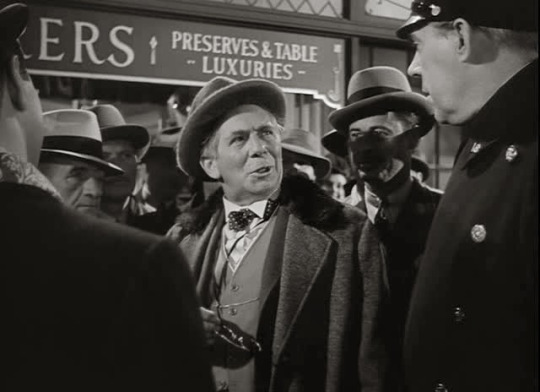
Ray Collins (Professor B) also collaborated with Orson Welles on Citizen Kane (1941) and The Magnificent Ambersons (1942), along with Agnes Moorehead. He is best remembered for playing Lieutenant Tragg on “Perry Mason” from 1957 to 1965.

Marion Martin (Mimi Venus) would also be seen with Lucille Ball in Abbott and Costello in Hollywood (1945). Although she was often cast as a brassy stripper, showgirl or tough gun moll, off screen she was known to be extremely shy and retiring.
“That dame is a lump of mud!” ~Gloria (about Mimi)

William Orr (Decatur Reed) was an actor turned executive. As the head of WB Television for nine years, he was executive producer of the studio's early forays into the medium, helping to put ABC on the prime-time map with a steady staple of westerns and detective shows. In 1959 he received a Golden Globe for his contributions to television.

Vera Gordon (Mrs. Lefkowitz) emigrated with her family from Russia when she was seven years old. She became involved in the theatre and was active in silent films and early talkies. She had previously appeared with Lucille Ball in 1938′s Having Wonderful Time.

George Cleveland (Col. Venus) makes his fourth film appearance with Lucille Ball. In 1949 they also did Miss Grant Takes Richmond. He is best remembered for playing Gramps on “Lassie” (1954-57).

Ozzie Nelson (Himself) was considered the pre-eminent TV dad of the 1950s thanks to his successful family sitcom “The Adventures of Ozzie and Harriet” (1952-66). Before TV fame, he was a bandleader with his wife Harriet the lead singer. Nelson later appeared on several talk shows with Lucille Ball.
UNCREDITED CAST (with connections to Lucille Ball)
Baby (Gloria’s Pekingese Dog)

Louise Beavers (Ruby, Gloria’s Maid) went on to appear in three more films with Lucille Ball: DuBarry Was a Lady (1943), Lover Come Back (1946), and The Facts of Life (1960).
Charles Cane (McCarty, Holland Tunnel Policeman) also appeared with Lucille Ball in The Dark Corner (1946) and as one of the theatre patrons at “Over The Teacups” in “Ethel’s Birthday” (1954) which also featured Big Street extras Bess Flowers, James Conaty, Sam Harris, and Harold Miller.
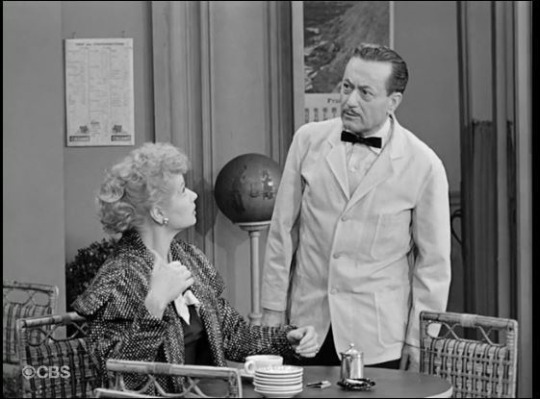
Jack Chefe was seen as a Paris waiter in “Lucy Meets Charles Boyer” (ILL S5;E19) and played a bellhop in “Lucy and John Wayne” (ILL S5;E2) and had also appeared in five films with Lucille Ball, including playing a waiter in Forever, Darling. Of Chefe’s 358 film roles, 165 were waiters!
James Conaty (Nightclub Patron) was also seen with Lucille in I Dreamed Too Much (1935), Lured (1947), and The Long Long Trailer (1953). He was one of the theatre patrons at “Over The Teacups” in “Ethel’s Birthday” (1954) which also featured Big Street extras Bess Flowers, Charles Cane, Sam Harris, and Harold Miller.
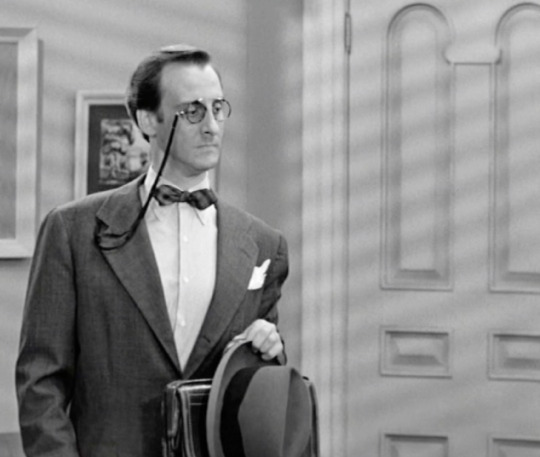
Hans Conried (Waiter) played Harry Martin in “Redecorating” (ILL S2;E8) and Percy Livermore in “Lucy Hires an English Tutor” (ILL S2;E13), both in 1952. He also did two episodes of “The Lucy Show,” both as her music tutor Dr. Gitterman in 1963.
Pedro de Cordoba (Doctor) was also seen with Lucille Ball in Five Came Back (1939).

Helen Dickson (Florida Club Patron) had appeared with Lucille Ball in Carnival (1935) and Two Smart People (1946). She was one of the aging flapper showgirls in “Ricky Loses His Voice” (ILL S2;E9) in 1952.
Jimmy Dime (Truck Driver / Stunts) was seen with Lucille Ball in 1951′s The Magic Carpet. He did a half dozen episodes as a background players on Desilu’s “The Untouchables” (1959-61).
Eddie Dunn (Mulvaney) was also part of Ziegfeld Follies (1945) featuring Lucille Ball.
Jay Eaton (Late Night New York Nightclub Patron) did a total of nine films with Lucille Ball between 1934 and 1949, including her other Damon Runyon film Sorrowful Jones (1949).

Bess Flowers (Florida Nightclub Patron) aka 'Queen of the Extras’ made numerous uncredited background appearances on both “I Love Lucy” and “The Lucy Show.” She holds the record of the most film collaborations with Lucille Ball: 17.
Karen X. Gaylord (Florida Club Patron) was also part of Ziegfeld Follies (1945) featuring Lucille Ball.
Charlie Hall (Caviar Waiter) also did Kid Millions with Lucille Ball and went on to do four more films with her until 1942.
William Halligan (Detective) was also with Lucille Ball in 1940′s You Can’t Fool Your Wife.
Art Hamburger (Joe Duffle, Eating Contest Opponent) makes his final of three screen appearances. He became an associate director. This is his only time working with Lucille Ball.
Joe Duffle is from Boston and weighs 337 and a half pounds. There is some irony that Nicely Nicely (then Violette’s) eating contest opponent is actually named Hamburger.
Mary Halsey (Showgirl) also did Seven Days Leave with Lucille Ball in 1942.
Sam Harris (Passerby on Florida Boardwalk) was in the background of a dozen Lucille Ball films, as well as being seen on “I Love Lucy,” “The Lucy-Desi Comedy Hour” and “The Lucy Show.” He was one of the theatre patrons at “Over The Teacups” in “Ethel’s Birthday” (1954) which also featured Big Street extras Bess Flowers, Charles Cane, James Conaty, and Harold Miller.
Jack Herrick (Mindy’s Customer) was also seen with Lucille Ball in The Bowery (1933).
John Indrisano (Mug at Mindy's) was also seen with Lucille Ball in The Facts of Life (1960).
Tiny Jones (Small Friendly Neighbor) was seen with Lucille Ball in A Girl, A Guy, and a Gob (1934) and Five Came Back (1939).
Donald Kerr (Pete the Passer) appeared in eight films with Lucille Ball between 1936 and 1954.
Wilbur Mack (Florida Club Patron) appeared in three more films with Lucille Ball: Thousands Cheer (1943), Ziegfeld Follies (1945), and Lured (1947).
George Magrill (Mug at Mindy's / Stunts) appeared with Lucille Ball in ten films between 1933 and 1949.
Richard Martin also did Seven Days Leave with Lucille Ball in 1942
Tony Merlo (Mug at Mindy's) was also seen with Lucille Ball in Dance, Girl, Dance (1940) and Broadway Bill (1934).
John ‘Skins’ Miller (Truck Driver) was also with Lucille Ball in Fancy Pants (1950) and Sorrowful Jones (1949).
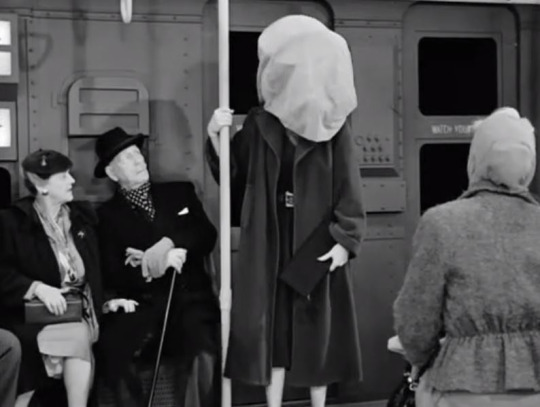
Harold Miller (Florida Club Patron) shares 13 film credits with Lucille Ball. He was one of the theatre patrons at “Over The Teacups” in “Ethel’s Birthday” (1954) which also featured Big Street extras Bess Flowers, Charles Cane, James Conaty, and Harold Miller. Harris would return for “Lucy and the Loving Cup” (S6;E12) as a subway strap hanger. He appeared in six episodes of “The Lucy Show,” the last one being as a party guest on “My Fair Lucy” (1965).
Bert Moorhouse (Florida Club Waiter) did nine films with Lucille Ball from 1933 to 1954.
Frank Moran (Mug at Mindy’s) makes his final of five film appearances with Lucille Ball.
George Noisome (Newsboy) also appeared with Lucille Ball in That’s Right, You’re Wrong (1939).
Barry Norton (Florida Club Patron) was also seen with Lucille Ball in Nana (1934) and Dance, Girl, Dance (1940).
Frank O’Connor (Police Captain at Holland Tunnel) did nine films with Lucille Ball from 1933 to 1946.

Gil Perkins (Mug / Stunts) was aboard the train when Lucy and Ricky headed home from California in “The Great Train Robbery” (ILL S5;E5). He was seen in The Fuller Brush Girl (1950) with Lucille Ball. He made one appearance on “Here’s Lucy” (above right) in 1970.
Bob Perry (Toupee, Associate of Ables / Stunts) was also seen with Lucille Ball in Stage Door (1937) and Joy of Living (1938).
Ralph Peters (Florist) was also with Lucille Ball in Sorrowful Jones (1949).
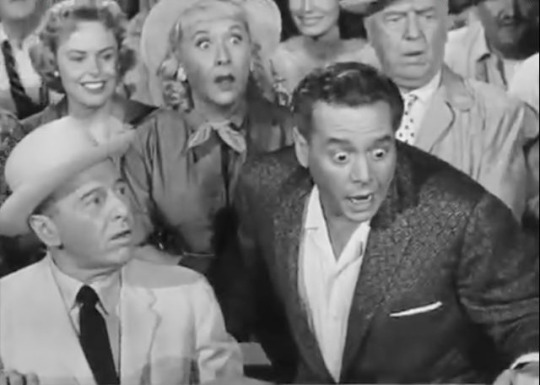
Addison Richards (Dr. Mitchell) played the American Consul in “Lucy Goes To Mexico” (LDCH 1959) as well as three other films with Lucille Ball.
Dewey Robinson (Truck Driver) did five other films with Lucille Ball.
Shimen Ruskin (Waiter Captain at Florida Club) was previously seen with Lucille Ball in Having Wonderful Time (1938) but is best remembered as Mordcha in the film Fiddler on the Roof (1971).
Hector V. Sarno (Friendly Neighbor) was also with Lucille Ball in Muss ‘em Up (1936).

Harry Shannon (Florida Doctor) was seen with Lucille Ball and Desi Arnaz in Too Many Girls (1940). He played Jim White (above center), photographer in “Men Are Messy” (ILL S1;E8) in 1951. He is probably best remembered as the father of Rose (Rosalind Russell) in Gypsy (1962).
Walter Soderling (Doctor at Mindy’s) was with Lucille Ball in Easy To Wed (1946).
Mary Stuart (Showgirl) was also seen with Lucille Ball in Seven Days Leave (1942). She is best remembered for her four decade run as Mary on “Search for Tomorrow”.
Elliott Sullivan (Tramp) was also in That’s Right, You’re Wrong (1939) and Next Time I Marry (1938) with Lucille Ball.
Harry Wilson (Fethington) did four other films with Lucille Ball between 1934 and 1950. He was also an extra on Desilu’s “Untouchables” (1959-62).
Marie Windsor (Florida Club Patron) was also in Critic’s Choice (1963) with Lucille Ball.
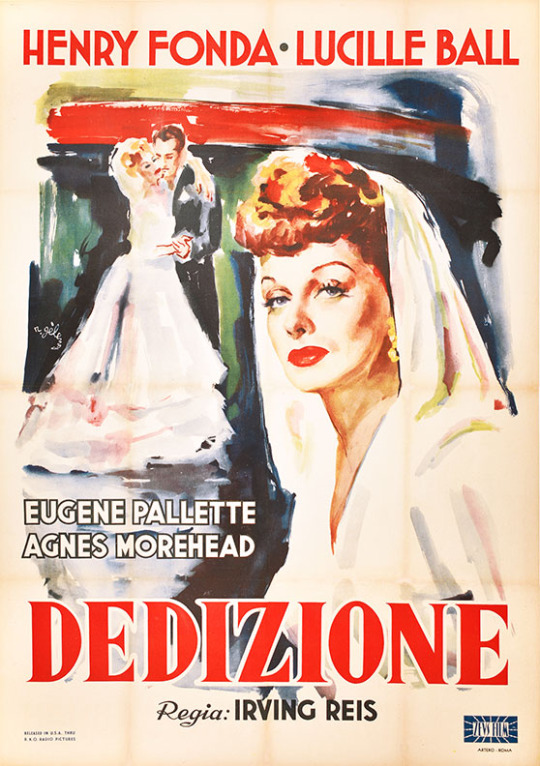
BIG STREET OPENING
"Loser's Lane - the sidewalk in front of Mindy's Restaurant on Broadway - is not as high-toned a trading center as Wall Street, but the brokers are a lot more colorful. Generally they prefer to put their money on a prizefight or horse race, but when the action slows, anything can happen and it usually does. Tonight, for example, the citizens of the Lane are discussing the latest contest in their usual quiet way..."
BIG STREET TRIVIA
The Big Street was a nickname for Broadway, where this movie's plot starts, and where all Runyon's stories take place. The film opens at West 50th and Broadway in New York City, with the marquee of the Capitol Theatre in the background.

Damon Runyon originally wanted to cast Charles Laughton and Carole Lombard in the lead roles, but neither one was interested in the project. The two had previously paired on White Women (1933) and They Knew What They Wanted (1940), Lombard suggested the producer consider her friend Lucille Ball and, despite pressure by RKO to hire a better-known actress, Runyon offered her the role. Unaccustomed to playing series roles, Lucille asked advice from Laughton on how to approach such a difficult part. Laughton told her not to hold back: “If you are going to play a bitch, play a bitch!”
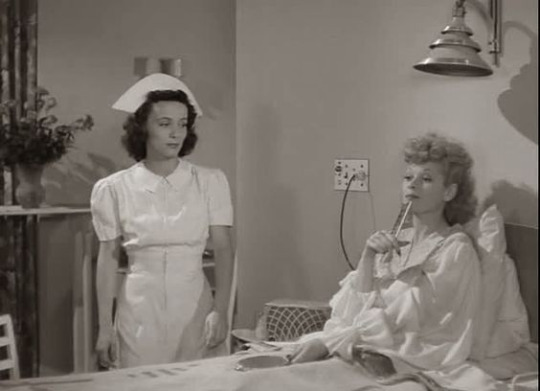
Ball later recalled that at the time she was cast, "nothing much seemed to be happening for me at the studio. My $1000 weekly paycheck came regularly, but I was still a regular among the Bs."
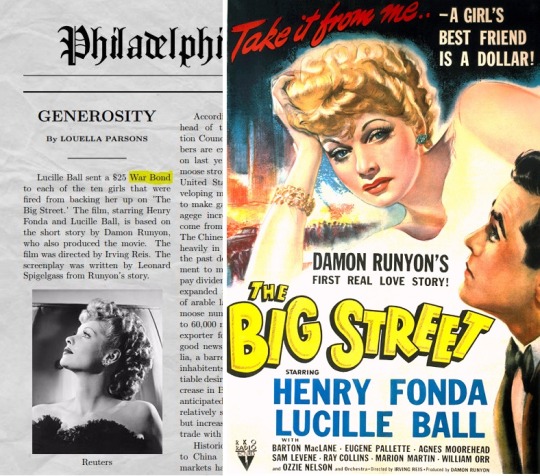
Philadelphia Daily News ~ June 6, 1942
Reports that Lucille Ball sent a $25 War Bond to each of the ten girls that were fired from backing her up on “The Big Street”.
During filming, Lucy’s new husband Desi Arnaz felt so insecure about leaving Lucy and Fonda alone together that he’d often pop by the set to keep an eye on them. His paranoia so exasperated director Irving Reis that he finally banned him from the set.
This was Lucille Ball’s favorite of her nearly 80 films. She felt her performance was unjustly ignored by the Academy.

The vocals for "Who Knows?" by Harry Revel and Mort Greene, performed by Gloria in Case's Manhattan club, were provided by Martha Mears. The character later reprises the song with Ozzie Nelson and his orchestra in the Miami nightspot.
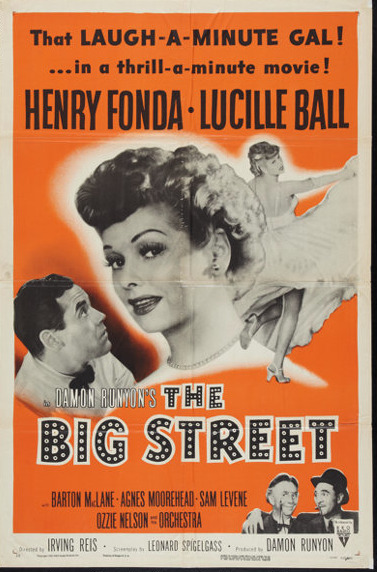
The film was re-released in 1955, at the height of Lucille Ball’s television success. Although Fonda remains first billed, Ball’s photo clearly indicates that she is the drawing card.
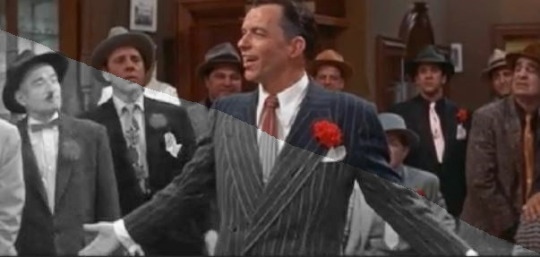
Damon Runyon also created the source material for the hit Broadway musical Guys and Dolls (1950), which starred Robert Alda, who went on to make several appearances on “The Lucy Show.” The two stories share the character of Nicely Nicely Johnson. When the film version was made by MGM in 1955, Lucy and Desi were also under contract to the studio. A brief clip of the film was inserted into the middle of an episode of “I Love Lucy” called “Lucy and the Dummy” (S5;E3), although the clip was removed after its initial airing. Further, when Lucille Ball first came to Hollywood, before becoming a contract player at RKO, she worked for Sam Goldwyn as one of the Goldwyn Girls. In Guys and Dolls, the Hot Box Girls are played by the Goldwyn Girls.
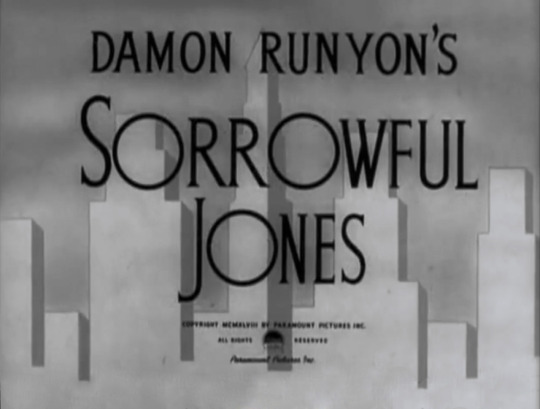
In 1949, Lucille Ball starred in another film based on a Damon Runyon story, Sorrowful Jones, a remake of the 1934 Shirley Temple film, Little Miss Marker.
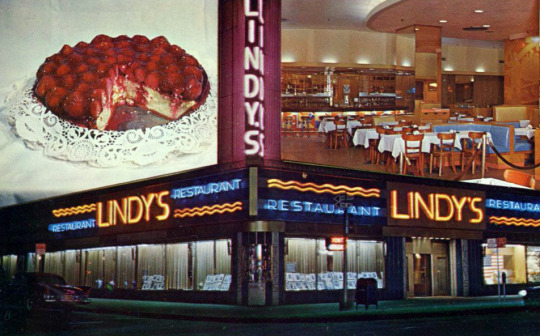
Damon Runyon was a big fan of Lindy’s, a Manhattan restaurant famous for their cheesecake, and wrote the eatery into his books as Mindy's. The musical Guys and Dolls, based on Runyon's writings, immortalizes Lindy's in one of its songs. In “Ricky’s Contract” (ILL S4;E10), Lucy tells Fred and Ethel that Ricky took his entire band to Lindy’s to celebrate learning that he had been offered a movie contract.
In The Big Street, a sympathetic Pinks decides to take Gloria to Florida to recuperate - by pushing her wheelchair the entire way - starting with the Holland Tunnel! Although Lucy and Fonda never left Hollywood, the locations are achieved by rear projection and establishing footage.

The Holland Tunnel figures into “I Love Lucy,” not once - but twice. In “The Marriage License” (ILL S ), after finding out that her marriage license may be invalid, Lucy goes on a twelve hour walk to East Orange, New Jersey. “How I ever got through the Holland Tunnel, I don’t know.”

The Holland Tunnel will be mentioned again three years later in “Lucy Learns to Drive” (ILL S4;E11). Reportedly, she tried to make a u-turn in the Holland Tunnel resulting in traffic being tied up to East Orange, New Jersey.

Action is also set in Miami Beach, Florida. Pinks and Gloria hitchhike there to visit with Nicely Nicely and Violette who are operating a night spot there.
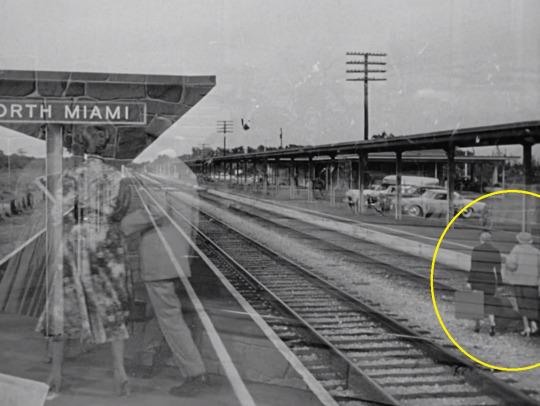
In “Off To Florida” (ILL S6;E6), Lucy and Ethel also hitchhike to Miami Beach Florida after being left on the side of the road by their ride share, a suspected hatchet murderess. They arrive at the North Miami train station covered in chicken feathers from riding in the back of a poultry truck.
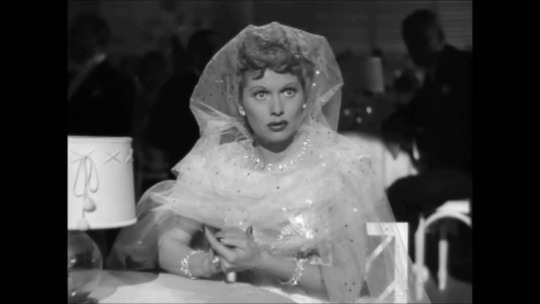
Doting Pinks has a pet name for haughty Gloria: 'Your Highness'. In Florida, her friends conspire to get people to come and hear her sing by fibbing that she is the Princess of Corolia, a fictional place.

In “The Publicity Agent” (ILL S1;E31), Lucy conspires to get Ricky more publicity by pretending to be a fawning fan of royal blood: ‘The Maharincess of Franistan’!
FAST FORWARD!
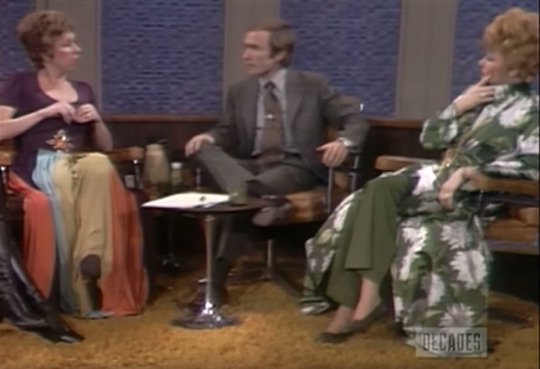
On a 1971 episode of “The Dick Cavett Show" with guests Lucille Ball, Carol Burnett, and Lucie Arnaz, Lucie compliments her mother's dramatic performance in the film.
The film is referenced in the television film Lucy & Desi: Before the Laughter (1991)
A poster for the film is on Lucy’s dressing room wall in Lucy, a 2003 TV movie.
The Big Street turns up in the TV listings in the low budget film Hollywood Mouth (2008) starring Joe Bologna.
A clip from the film is featured in a montage during “AFI Life Achievement Award: A Tribute to Henry Fonda” a 1978 special attended by Lucille Ball.
Henry Fonda: The Man and His Movies (1982) contains dressing room and dance floor scenes with Lucille Ball.
The Emmy-winning documentary Lucy and Desi: A Home Movie (1993) features a brief clip from the movie.
When Cher is TCM Guest Programmer in 2011, she selects The Big Street as one of her films to be aired.

In December 1948, Lucille Ball reprised her role on radio with John Garfield taking the role of Pinks.
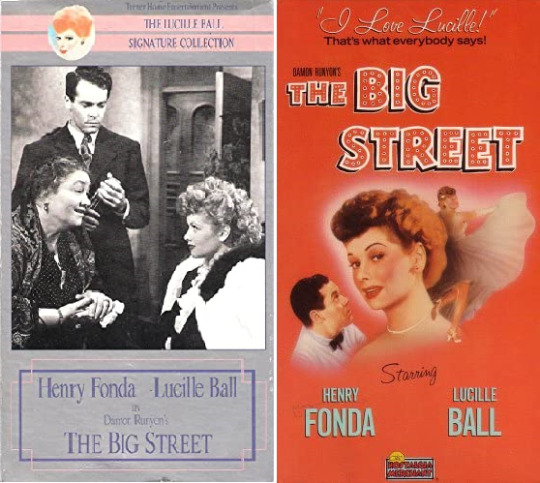
The Big Street on VHS.
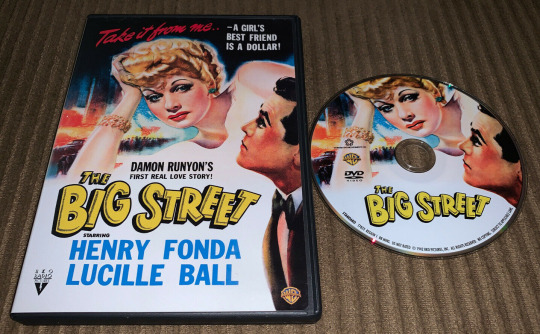
The Big Street is available on DVD from Warner Home Video. It is also part of the Lucille Ball Collection DVD, which also includes Dance, Girl, Dance, DuBarry Was A Lady, Critic’s Choice, and Mame.

14 notes
·
View notes
Text
Mon 2 Sept
"Back to work," said Liam and I'm just gonna assume he meant me cause man, they are making a lot of work for me right now so thank you for noticing Lima so thoughtful!
Louis is of course the man of this week (though the rest are right behind him so next week is anyone's guess), KMM release is closer every minute and we're not to forget it- today we got a lyric tease and a glimpse of some visuals. "The devil in my brain, whispering my name…," Louis tweeted, and a picture of a pen drawing (road, hills) with lyrics (and release info) on it pinned to a board was posted to his instagram. Definitely looks like it could be from another lyric video in the stop motion style of the excellent TOU lyric video (and the JLY video)... And then, a minor German site posted a pre KMM article about Louis, mostly totally standard, except for at the end when it says, "A second song release is already scheduled. As Sony Music announced, the second single We Made It will be released on October 3rd." Some question the source's validity and for sure! This isn't official and could be drawn from (speculative) twitter gossip! But them just carelessly using info that was supposed to be embargoed until a later date is plausible as well. Louis did tell us to expect two singles in close succession, he teased a song called "** **** it" and said that song might be a single, Oct 3 is a Thurs about exactly one month after the KMM release date... I buy it. If it is real and is that song: one, VERY EXCITING, two, we've heard a clip of it! It's the song he posted a clip of in Feb of last year ("a new mix of something for the album.") (Oh my indeed.) And finally, three, it can be about whatever it's about but if he didn't want us to draw a link to Harry singing You're Still The One he could have changed the name and if he didn't know damn well we would he wouldn't have starred it out to save it up.
Liam posted a car selfie this morning titled, as mentioned, "back to work" and then sure enough, got right to it. He showed up at Capitol Records signing a wall, posted a handsome walking-down-the-street pic captioned "I hope you’ve all had a good start to the week," members of his team reposted that pic with the back to work caption, everyone's got a part to do to get the Liam promo machine rolling, he posted a fanart of this mornings selfie (the fast turnover!) and he followed Maya Henry (who then liked his post). We're told by "sources" that he and Maya have "been seeing each other for a while" but were waiting until Liam was promoting a new single to go public. Scott and Chris on BBC Radio 1 mentioned today that they wanted Liam fans to get in touch as 'something cool could go down'; one fan who texted in got a call back and was asked if she was free at 4pm tomorrow (um YES obviously) but given no other details. That show ends at 4 so whatever fan interaction happens is unlikely to be live tomorrow but we'll be hearing from him all week I think: another radio station says that he'll be popping by tomorrow... Tomorrow is also the GQ Men of the Year Awards, co-hosted by Hugo Boss: let's just say I wouldn't bet against him making an appearance but if you want to I'll put big money down in favor
Niall, also gearing up towards release, sat down and wrote an essay on twitter, wow. He writes about how he loves Flicker and how happy he was/is with it, and how appreciative of the response, and how touring it let him see what people responded to and work that into his process, and how excited he is to get the new stuff out. "What's the hold up then," he's asked, and he is like yeah yeah there's a lot that goes into this, and talks about all the different teams working on different parts of things. A good reminder of the iceberg that is a label release: months of work that have to be completed with us seeing only glimpses before the much smaller visible result pokes up out of the water for us to catch sight of at the last minute before we crash and die.
Harry liked a post about a fan's journey to feeling more confident with being gender non-conforming set to a HS1 vs HS2 timeline and a couple pictures from Harris Reed's new (gender fluidity themed) collection and took a fan pic back in London: don't ask cause I don't know, his hair was tucked in a hat.
#Louis Tomlinson#Liam Payne#Niall Horan#Harry Styles#Harry#Louis#Niall#Liam#KMM#we made it#Scott Mills#chris stark#thank you to wereallalittlebit for help and for info and for being awesome#hey look at me getting my info straight from the source like a proper reporter i feel like gay Lois Lane#actually isn't the a character like that on Supergirl? shoulda finished that show#also to evilovesyou for German translating#GQ Men of the year#Michael Sheen is hosting and i for one will not complain if he wants to interact with Liam#good content!#harris reed#laya#kmm lyric video#2 Sept 19#lots more on this iceberg thing at some future point I'm really enjoying watching the threads of things we've seen Louis doing but not#known what they were#resolve into solid stuff that's now being brought out for promo
247 notes
·
View notes
Photo

Driehaus Prize and Reed Award
Established in 2003, the Richard H. Driehaus Prize is awarded to a living architect whose work embodies the highest ideals of traditional and classical architecture in contemporary society, and creates a positive cultural, environmental, and artistic impact.
In conjunction, the School presents the Henry Hope Reed Award to recognize achievement in the promotion and preservation of those ideals among people who work outside the architectural field.
#traditionalist architecture#classical architecture#driehaus prize#reed award#henry hope#richard h driehaus
1 note
·
View note
Text
In the Practice Room with the 2019 Rubin Scholars
For each of the past 14 years, Oberlin Conservatory has welcomed the legendary American mezzo-soprano Marilyn Horne for a weeklong residency. And after each of the past six, Horne has awarded $10,000 to outstanding students that she coached during her campus visit. Both the scholarship and the Horne residency are made possible by the singer’s close friend and philanthropist Stephen Rubin, president and publisher of Henry Holt & Co. This spring, Horne named soprano Whitney Campbell ’19 and tenor Shawn Roth ’20 the new awardees, each receiving $5,000 in funding for auditions, travel, and the living expenses that accompany the life of a young artist. While singing for THE Marilyn Horne was a bit nerve-racking for both Whitney and Shawn, they both admit that having fun has backed all their hard work at Oberlin.

When were you first inspired by the human singing voice?
Whitney: As a child, I would go around the house singing at all hours of the day. The first time I was inspired by the operatic voice, was when I heard Renée Fleming live in recital when I was 13 years old. Her ability to touch the soul with her voice alone inspired me to pursue this career!
Shawn: Among a few moments that stick out in particular would be the first time I heard a recording of Pavarotti singing “La donna è mobile.” There was just something so other-worldly about it—it sounded too perfect to be of this earth. I thought, “Whoa, opera’s the coolest thing there is,” because nothing remotely came close to listening to it.

What are some of your greatest musical influences?
Whitney: Since first hearing Renée Fleming in that recital, I have always gone back to her as a source of inspiration. I consider her my biggest role model. Her innate musicality and ability to express with her voice is something I aspire to achieve. I have read her book, The Inner Voice, at least three times. Angela Meade, Marilyn Horne, Montserrat Caballé, Eileen Farrell, Mirella Freni, and so many more, also influence my work. In addition to those singing role models, it was my longtime choir director Barbara Walker who introduced me to music and really inspired me to pursue this career. She heard me singing at the pool when I was five years old and recruited me on the spot to join the Livingston Parish Children’s Choir in Denham Springs, LA, where I sang from kindergarten through seventh grade. She is still a major musical influence and mentor to me today. Without her, I probably would not have gotten into music at all.
Shawn: Every day I find another reason to sing, whether it’s because I’ve discovered a new aria or new singer, perhaps I found out something new when I practiced that day, or maybe someone said something I’d like to prove wrong! As far as musical influences go, I’ve had a few constants—one would be Pavarotti. I always go back to him, even if I haven’t listened to him in months. Another would be classical radio programming. I grew up in Johnstown, Pennsylvania, with Pittsburgh’s classical radio station WQED. One night, when I was a kid, I was messing with my radio before bed and came across this absolutely, shockingly mesmerizing sound. It was a beautiful symphony—I unfortunately don’t remember what the piece was, but I remember the host saying it was by an African-American composer. Probably William Grant Still’s Symphony No. 1, now that I think of it. But from then on I would listen to the classical station anytime I could, and I credit that with giving me my love for classical music in particular. When I come home I turn the dial as soon as I’m in range!

Shawn performs opposite soprano Alexis Reed ’20 in Missy Mazzoli’s Proving Up in the January 2019 Winter Term Opera.
What have been some of your greatest experiences in Oberlin? Any most valuable takeaways?
Whitney: Having the opportunity to work with Marilyn Horne is definitely at the top of my list! It was an absolutely incredible experience that I am beyond grateful for. During my four years at Oberlin, I was fortunate enough to be cast in all four of the operas conducted by Christopher Larkin. After being in the chorus for the first two, I got to work more closely with him on solo roles in Britten’s The Turn of the Screw and Poulenc’s Dialogues des Carmélites. It was such a privilege to work with maestro Larkin during my time here. He was so inspiring with his encouraging words and musical ideas, while simultaneously teaching us how to work with a full orchestra. It’s incredible that Oberlin provided us—as such young singers—with fully staged, costumed, and orchestrally supported opportunities to grow as artists on stage.
Shawn: Getting accepted to Oberlin in the first place was such a thrill, since I really only began studying voice seriously during my senior year of high school. I’ve been incredibly fortunate for what Oberlin’s given to me. I’ve had the chance to work with an amazing teacher, Salvatore Champagne, throughout my time here. As an underclassman I got to listen to incredibly talented colleagues like Olivia Boen ’17 and Cory McGee ’18 before they took off. I’ve been in master classes with world-renowned artists such as Marilyn Horne, George Shirley, Gerald Martin Moore, and Brian Zeger. I’ve worked on operas with two of the best living composers, Du Yun and Missy Mazzoli. And I’ve been invited to sing with the Cleveland Orchestra as a soloist, twice, because they reached out to Oberlin specifically for singers. How can I possibly pick a favorite out of any of those?! And I still have one more year left, which is hands-down the craziest part. Can’t wait to see what happens next year!

Whitney Campbell in Oberlin Opera Theater’s spring 2019 production of Poulenc’s Dialogues des Carmélites.
Singing on the Marilyn Horne master classes is one of the most exciting honors for Oberlin singers. What was that first experience of working with the great American mezzo like for you?
Whitney: As I was sitting in the audience, waiting for my turn to sing the “Czardas” from Die Fledermaus for Marilyn Horne, I was the most nervous I’ve ever felt for a performance. However, after getting through the first sing-through, she was so kind—I just knew she was rooting for all of us to succeed! She had such great, really helpful advice for me about pacing the piece. It ended up being one of my favorite performances at Oberlin. To top it all off, I got to have an hour-long lesson with her the next day! I never would’ve thought I would have the chance to casually sing through my repertoire for Ms. Horne. It was a life-changing experience, and I still can’t believe it happened. One of the coolest things she said to me was that I reminded her of herself at a young age, which was the best compliment I could ever wish to receive. I’m still reeling from it! I really hope I can continue to work with her in the years to come!
Shawn: Oh god, I’ve never been more nervous than when I was waiting backstage to go on stage for Ms. Horne. As the most established living American mezzo, she’s one of the most intimidating people to sing for on the planet...at first. Once I got out there and she started asking me about my pieces, she made me feel right at home. (I think both of us being from western Pennsylvania probably helped, too!) She’ll ask you to do things no one else will, and as a result, can improve your performance in ways no one else can. Working with her in a private lesson was just as exciting—at the time, I was singing baritone, and had Billy Budd’s aria in my package. To help me out, she told me how the first baritone to sing that role sang it, who just happened to be a friend of hers. That’s the beauty of Ms. Horne’s experience—she’ll tell you things that came right from the mouths of Britten or Stravinsky themselves.

Shawn in Oberlin Opera Theater’s fall 2018 production of Bernstein’s Trouble in Tahiti with castmate and mezzo-soprano Gabriela Linares ’21.
What did your path to music and Oberlin look like?
Whitney: Following my years of experience singing in the Livingston Parish Children’s Choir, I decided to audition for the New Orleans Center for Creative Arts, right in my hometown. After being admitted at the high school level, I skipped 8th grade and went straight into high school. I studied classical voice with Phyllis Treigle, expanded my art song repertory, participated in a number of opera scenes, and performed in two full operas. It was in those pivotal years that I discovered that opera was all I wanted to do. Throughout high school, I did summer opera intensives at Louisiana State University and the Brevard Music Center. It was during my junior year that my mom convinced me to go to Oberlin’s Vocal Academy for High School Students, and I fell in love with this school! I could just feel that Oberlin would help me grow into a more well-rounded artist. And, the conservatory immediately became my number-one pick for undergrad. Now, as I approach graduation, I realize how lucky I was to receive such a thorough music education from such a respected institution. I am so grateful to everyone that made my experience here such an exciting one!
Shawn: So, although music was a constant in my life since day one, I had a lot of insecurity and anxiety about what to study in college. Where I’m from, the only real “path” for musically-inclined kids was to go to one of three or four state schools, get a degree in music education, and try your luck at applying for teaching jobs in the area. Three of my high school music teachers sat me down with my parents one day to try to scare me out of a performance-based career, because it was just such an “outlandish” idea. Of course, I chose Oberlin anyway. I think it’s worked out pretty well so far. So my advice for anyone who needs to hear it is this: Do what you want to be doing with your time. It’s not anyone else’s, and it’s the only thing you can’t get back once it’s gone.
Now for a more uplifting story! The exact moment that I knew I wanted to sing for a living came while I was singing with a regional choir in my junior year of high school, led by an incredibly talented conductor, Chris Jackson. We were preparing Mozart’s Regina Coeli, which features a solo quartet out in front of the choir. Wanting that solo so badly and hoping to stand out, I called upon my official sponsor for this interview, Luciano Pavarotti, and just tried to sound like him as much as possible. It worked, and I got the solo! Singing out there in front of everyone activated the strongest emotional response to music I’ve ever had, and I knew then that I wanted to do this for the rest of my life. I still get that feeling when I perform, and it’s one of the strongest highs you can feel. I actually ended up running into Chris last summer, when we were both singing at the Yale School of Music’s Norfolk Festival. During a break in rehearsal, I re-introduced myself and thanked him for letting me discover my passion—then we went right back to singing, this time as colleagues. All the more proof that the classical music world is the smallest there is!
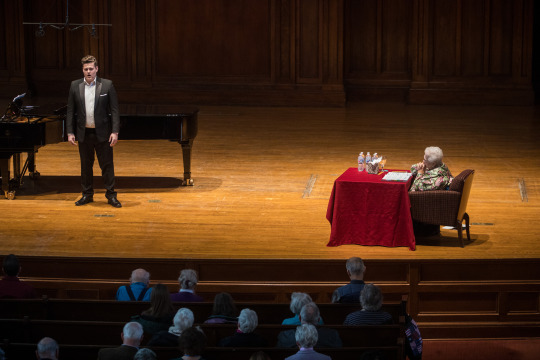
“Do what you want to be doing with your time. It’s not anyone else’s, and it’s the only thing you can’t get back once it’s gone.”

Whitney, Shawn, and fellow voice majors with guest master clinician and acclaimed vocal coach Gerald Martin Moore.
Do you have any advice for our incoming freshman singers?
Shawn: Have fun, and listen to each other. A large portion of your education comes from classes and lessons, but perhaps the most valuable things you’ll learn will come from your friends and colleagues. Be easy to work with—it will pay dividends in the long run. Even that still boils down to just being receptive to the people around you. Your entire time as an undergrad is an audition for all your peers, because they’ll be the ones who will get you jobs later on. And people who are easy to work with will be easy to employ. So show up with your music memorized, do the things the conductors ask you to do, and have fun with it, because that’s why we all do it at the end of the day. Also, learn German. The Germans already know English.
Whitney: Absolutely don’t forget to learn from your peers! Be supportive of each other—don’t tear each other down! Be a good colleague. Be respectful. Be prepared. Always be on time. It will only help you in the long run to have a reputation of being respectful and dependable. And, lastly, remember why you came to Oberlin. You came here to do what you love: sing opera. You are here to do it for you, and it doesn’t matter what anyone else thinks or says. Have fun with it!
#opera#singing#classical voice#classical music#music#Marilyn Horne#Whitney Campbell#Shawn Roth#soprano#tenor#bass#mezzo-soprano#music school#Oberlin#Oberlin Conservatory#summer program#Louisiana#New Orleans#pennsylvania
3 notes
·
View notes
Text
Us, March 11
Cover: Kate Middleton and Meghan Markle Changing the Royal Rules

Page 1: Red Carpet First Look -- Miley Cyrus
Page 2: Red Carpet -- Men’s Colorful Suits -- Darren Criss, RuPaul, Rami Malek, Kendrick Sampson, Terrence Jenkins
Page 3: John Krasinski, Reid Scott, Timothee Chalamet, Matthew McConaughey, Spike Lee
Page 4: Who Wore It Best? Kat Graham vs. Heidi Klum, Michelle Dockery vs. Olivia Palermo, Kimberly Schlapman vs. Judith Light
Page 6: Rachel Zoe vs. Katharine McPhee vs. Lisa Rinna
Page 8: Please don’t wear goose down
Page 10: Loose Talk -- Ben Affleck on his son Samuel, Dolly Parton on her husband Carl, John Legend on wife Chrissy Teigen, Hilary Duff on costar Nico Tortorella drinking her breast milk, Ariana Grande on her personal life
Page 13: Contents
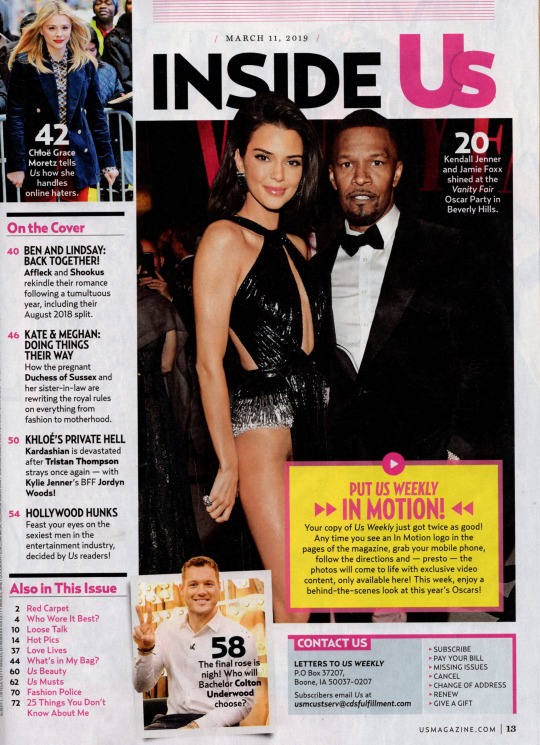
Page 14: Oscars -- Best Dressed -- Lady Gaga, Constance Wu, Emma Stone
Page 15: Regina King, Jennifer Lopez, Charlize Theron
Page 16: Love It or Hate It Pink Edition -- Gemma Chan, Helen Mirren, Kacey Musgraves, Angela Bassett, Linda Cardellini
Page 18: Beauty Behind the Scenes -- Lupita Nyong’o, Charlize Theron
Page 20: Hollywood’s Biggest Night -- Glenn Close, Bradley Cooper and Irina Shayk and mom Gloria Campano
Page 21: Rami Malek and Olivia Colman and Regina King and Mahershala Ali, Lucy Boynton

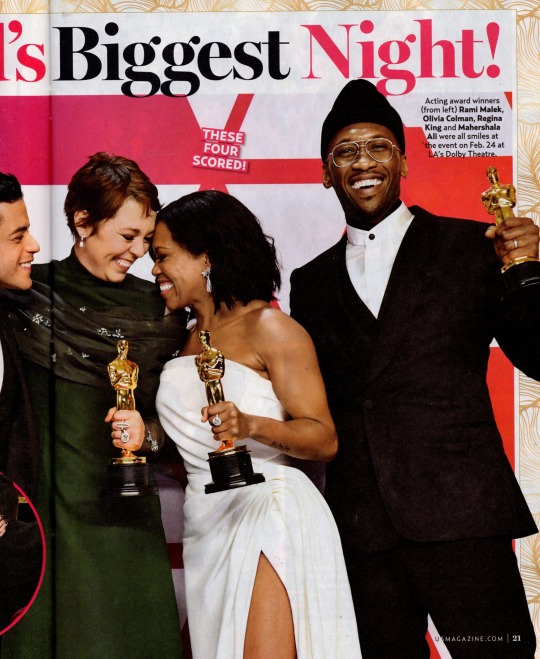
Page 22: Lady Gaga, Bradley Cooper, Melissa McCarthy and Brian Tyree Henry, Black Panther’s Michael B. Jordan and Letitia Wright and Danai Gurira and Winston Duke and Ryan Coogler and his wife Zinzi Evans
Page 23: Julia Roberts, Ruth E. Carter, Spike Lee and Samuel L. Jackson
Page 24: Behind the Scenes -- Maya Rudolph and Tina Fey and Amy Poehler and Jon Hamm, Priyanka Chopra and Nick Jonas
Page 25: Rami Malek, Selma Blair, Melissa McCarthy and Ben Falcone, Spike Lee and Barbra Streisand
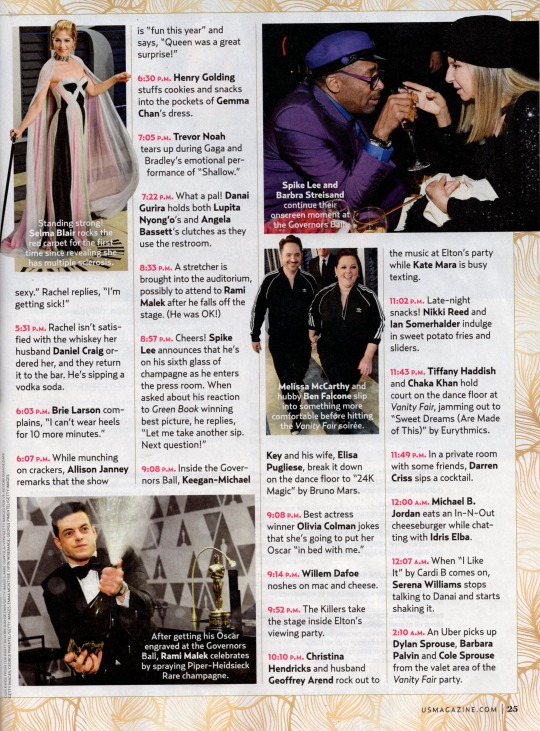
Page 28: Hot Pics -- Pink at the Brit Awards, Gwen Stefani and her dog, Taylor Lautner
Page 30: Double Date Night -- Priyanka Chopra Jonas and Nick Jonas and Elizabeth Chambers and Armie Hammer, Shannen Doherty and husband Kurt Iswarienko and Freddie Prinze Jr. and Sarah Michelle Gellar, Ariel Winter and Levi Meaden and Sarah Hyland and Wells Adams
Page 31: John Krasinski and Emily Blunt and Ryan Reynolds and Blake Lively, Matt Damon and Luciana Barroso and Chris Hemsworth and Elsa Pataky, Cynthia Bailey and Mike Hill and NeNe Leakes and her husband Gregg, Bob Saget and wife Kelly Rizzo and John Stamos and Caitlin McHugh
Page 34: Stars They’re Just Like Us -- Cameron Diaz, Channing Tatum, Ashton Kutcher
Page 37: Love Lives -- Chris Pratt and Katherine Schwarzenegger have been spending time on his Washington farm #farmlife
Page 38: Peta Murgatroyd and Maksim Chmerkovskiy are hoping for more children, Offset and Cardi B are on again, Sofia Richie not interested in joining Scott Disick’s new house-flipping show
Page 40: Ben Affleck and Lindsay Shookus back on
Page 41: Jussie Smollett shocking truth, VIP Scene -- Nikki Reed, Justin Bieber and Hailey Baldwin, Brad Pitt, Karlie Kloss, Sterling K. Brown and Ryan Michelle Bathe, Gerard Butler, Bella Hadid, Ciara and Russell Wilson
Page 42: Miranda Lambert’s new husband Brendan McLoughlin has to live in NYC to remain on the NYPD, Chloe Grace Moretz fights off internet trolls, celebrity moms get real on social media about breastfeeding -- Hilaria Baldwin, Remy Ma, Kate Hudson, Kat Von D, Hilary Duff
Page 44: What’s in My Bag? Betty Who
Page 46: Meghan Markle doing it her way
Page 47: Kate Middleton’s modernizing the monarchy too
Page 49: Duchess Meghan and Prince Harry’s exotic babymoon
Page 50: Khloe Kardashian’s private hell as her baby daddy Tristan Thompson is caught cheating with sister Kylie Jenner’s BFF Jordyn Woods
Page 54: Hollywood’s Hottest Hunks -- Jason Momoa
Page 55: Ryan Reynolds, John Krasinski
Page 56: Milo Ventimiglia, Bradley Cooper, Richard Madden
Page 57: Chris Evans, Chris Hemsworth, Chris Pine, Ryan Gosling
Page 58: The Bachelor Colton Underwood’s final 3
Page 60: Beauty -- Kim Kardashian’s makeup maven Mario Dedivanovic teaches his top tricks
Page 62: Musts -- Scott Foley and Lauren Cohan on Whiskey Cavalier
Page 64: Cameron Monaghan on Gotham, Buzzzz-o-Meter -- La La Anthony, The Familiars by Stacey Halls, Mark Wahlberg, Cardi B, Taylen Biggs, Tori Spelling
Page 70: Fashion Police -- Kim Kardashian, Bella Thorne, Charlize Theron
Page 71: Olivia Culpo, Rita Ora, Shailene Woodley
Page 72: 25 Things You Don’t Know About Me -- Ava DuVernay
#tabloid#kate middleton#duchess kate#princess kate#meghan markle#duchess meghan#miley cyrus#kendall jenner#jamie foxx#lucy boynton#rami malek#olivia colman#regina king#mahershala ali#glenn close#bradley cooper#irina shayk#gloria campano#selma blair#spike lee#barbra streisand#melissa mccarthy#ben falcone
6 notes
·
View notes
Text
5 Iconic Must-Watch Vintage Films on HBO Max
If you are a regular HBO Max watcher, then you must be aware of the classic movie collection it has to offer. If you are a vintage movie lover, then you are missing some of the great films. If you still haven’t bought your HBO Max, then you are missing some of the great cult classics. We are discussing five classic movies you can watch on HBO Max.

Adam’s Rib (1949)
Adam’s Rib is a romantic comedy directed by George Cukor, and it has a tag of best classic romantic comedy. The movie was nominated for Academy Awards in 1951 and was recognized as a significant movie culturally and historically.
Star Cast:
Spencer Tracy as Adam Bonner
Katharine Hepburn as Amanda Bonner
Judy Holliday as Doris Attinger
Tom Ewell as Warren Attinger
Jean Hagen as Beryl Caighn
Hope Emerson as Olympia La Pere
Eve March as Grace
The plot depicts the outstanding chemistry between Spencer and Katharine who are working as a lawyer against each other. The movie plot will become a fun-filled circus when these two try to defend their candidates, making it an eye-candy for comedy lovers.
The Brood (1979)
The Brood is a psychological horror film directed by David Cronenberg and produced by Claude Heroux. This movie is one of the most terrifying films ever made.
Star Cast:
Dr. Hal Raglan played by Oliver Reed
Nola Carveth played by Samantha Eggar
Frank Carveth played by Art Hindle
Juliana Kelly played by Nuala Fitzgerald
Ruth Mayer played by Susan Hogan
Mike Trellan played by Gary Mckeehan
Candice Carveth played by Cindy Hinds
Barton Kelly played by Harry Beckman
Chris played by Nicholas Campbell
Jan Hartog played by Robert Silverman
Inspector played by Michael Magee
The movie plot revolves around a husband and his mentally disturbed wife, who gets isolated because of some disputed medical approach towards mental illness. The director tried to conceal his feelings after his divorce and wanted to present the difficulties of a divorced couple with a child.
Brute Force (1947)
Brute Force is a crime movie directed by Jules Dassin and produced by Mark Hellinger. This movie is a beautiful depiction of love, revenge, and escape.
Star Cast:
Joe Collins played by Burt Lancaster
Capt. Munsey played by Hume Cronyn
Gallagher played by Charles Bickford
Gina Ferrara played by Yvonne De Carlo
Ruth played by Ann Blyth
The movie revolves around a convict who wants to take revenge from the guy who sent him in prison and escape from the confinement to be by her better half’s side for her medical treatment. This movie is a work of violence, blood, and brutal scenes.
Carnival of Souls (1962)
Carnival of Souls is a horror film directed and produced by Herek Harvey. Despite being a low budget movie, this movie was a classic piece of horror.
Star cast:
Mary Henry played by Candace Hilligoss
Mrs. Thomas played by Frances Feist.
John Linden played by Sidney Berger.
Minister played by Art Ellison.
Dr. Samuels played by Stan Levitt
The movie revolves around the lead role of Mary Henry, who relocated to a new place to make her life more stable but later becomes addicted to an abandoned canopy of a carnival. The movie depicts the disturbing and horrifying experiences of Mary, resulting in her death.
Godzilla (1954)
This movie was released in 1954 by Japanese film director Ishiro Honda. This movie is first in Godzilla franchise
Star Cast:
Hideto Ogata played by Akira Takarada
Emiko Yamane played by Momoko Kochi
Dr. Daisuke Serizawa played by Akihiko Hirata
Dr. Kyohei Yamane played by Takashi Shimura
Dr. Tanabe played by Fuyuki Murakami
Hagiwara played by Sachio Sakai
Masaji Yamada played by Ren Yamamoto
Shinkichi Yamada played by Toyoaki Suzuki.
This movie depicts the post-war era of Japan and how the authorities are dealing with the unannounced arrival of Godzilla, who is now a threat to the human race. Unknown to many, the first idea of Godzilla was of an octopus-like creature, but later it was finalized as what we have seen so far in Godzilla movies. Godzilla is in Guinness World Records and considered one of the outstanding films ever made. Japanese cinematography showed Godzilla as a mass destroyer and a strong representation of deadly weapons that are capable of mass destruction. The major theme of the movie revolves around the revenge of nature from humankind for creating a mass destructor like nuclear bombs.
Get some popcorn and indulge yourself in the nostalgia of some of the iconic classics. You will find some iconic pieces of work on HBO Max, which you cannot find on Netflix. Even after watching these movies, there will be much left to explore on HBO Max as it holds numbers of artistic pieces from the golden ages.
Jason Bravo is a Microsoft Office expert and has been working in the technical industry since 2005. As a technical expert, Jason has written technical, manuals blogs, white papers, and reviews for many websites such as office.com/setup.
Source : Iconic Vintage Films
0 notes
Text
2020 Best Nursing Homes - Pennsylvania

ElderPerfect a leading publisher on senior healthcare across the United States, today announced the recipients of the Best Nursing Homes in Pennsylvania for 2020. These awards are designed to recognize providers based on their ability to consistently deliver excellence in the areas of Health Inspections, Quality of Residence Care, Penalties and Staffing. We’ve evaluated over 695 facilities, of which 153 (22%) met our top rating. This report marks the Gold Standard in terms of care for seniors.
0
Ranked Best Facilities
5/5
US Standard vs. Best Facilities
Average Number of Beds: 106 vs 95
Average Occupancy: 81% vs 83%
Average Health Inspection Rating: 2.82 / 5.00 vs. 3.90 / 5.00
Average Government Rating: 3.01 / 5.00 vs. 4.49 / 5.00
Rating Methodology
Health Inspections
Every year, the government assigns inspectors to conduct a formal review of nursing homes for regulatory purposes to meet the mandates outlined for Medicare and Medicaid, this aims to measure and improve the safety of residents across providers. Facilities may also be inspected when complaints are submitted or based on a reported incident. When noncompliance is identified, the facility is served a citation that indicates which regulation that was identified, along with the severity of the incident. Nursing homes are subsequently required to execute a program of resolution in order to meet compliance. Some scenarios require enforcement actions to be applied, such as a civil monetary penalty or withholding of payment(s), to incentivize resolution in a timely manner.
Penalties
Facilities are applied 2 types of penalties due to non-compliance / accumulation of incidents. Civil penalties are monetary fines that may be applied to a facility based on citations / infractions identified during a review. The severity of a penalty is defined primarily by the size and frequency of the infraction.
Quality of Residence Care
There are 3 types of resident care ratings, but for this exercise, we primarily focused on the overall quality measure rating. The quality measures (QMs) include 17 data points that are derived from clinical information reported by the respective nursing home and also from Medicare claims data submitted for payment. Ratings are calculated for the QM domain using the 4 most recent quarters for which data are available. A nursing home receives points contingent on performance on each measure (weighting distribution is not equal).
Staffing
Staffing research is submitted regularly by the facility and is adjusted for the requirement of the facilities residents. For each of registered nurse staff and total staffing, a 1 - 5 rating is applied according to definitions established for each category. These ratings are subsequently combined to assign an overall staffing rating. As an example, to get an overall staffing rating of 5 stars, nursing homes must earn a rating of 5 stars for both registered nurses and total staffing. Nursing homes could also be assigned a 1 star rating should they not have a registered nurse on-site daily, and do not submit staffing data, or which the data cannot be verified.

Best Nursing Homes in Pennsylvania
PASSAVANT RETIREMENT AND HEALT
NESHAMINY MANOR HOME
GOOD SHEPHERD HOME RAKER CENTER
PHOEBE RICHLAND HCC
TWINBROOK HEALTHCARE AND REHABILITATION CENTER
NEW EASTWOOD HEALTHCARE AND REHABILITATION CENTER
SAINT MARY'S VILLA NURSING HOM
LUTHERAN HOME AT TOPTON, THE
SIMPSON HOUSE INC
MIFFLIN CENTER
AMBLER EXTENDED CARE CENTER
CORNWALL MANOR
BUCKINGHAM VALLEY REHABILITATION AND NURSINGCENTER
SARAH REED SENIOR LIVING
HAMILTON ARMS CENTER
BROOKSIDE HEALTHCARE & REHABILITATION CENTER
SAINT PAUL HOMES
GARDENS AT YORK TERRACE, THE
WESBURY UNITED METHODIST COMMU
KENDAL AT LONGWOOD
RYDAL PARK OF PHILADELPHIA PRS
MORAVIAN MANOR
ZERBE SISTERS NURSING CENTER,
BRETHREN VILLAGE
WILLIAM HOOD DUNWOODY CARE CTR
QUARRYVILLE PRESBYTERIAN RETIREMENT COMMUNITY
STONERIDGE TOWNE CENTRE
CALVARY FELLOWSHIP HOMES INC
GUY AND MARY FELT MANOR, INC
KINZUA HEALTHCARE AND REHABILITATION CENTER
SPANG CREST MANOR
PINE RUN HEALTH CENTER
CROSSLANDS
LUTHER ACRES MANOR
LAUREL CENTER
BRIARLEAF NURSING AND CONVAL C
HICKORY HOUSE NURSING HOME
LEBANON VALLEY BRETHREN HOME
MESSIAH LIFEWAYS AT MESSIAH VILLAGE
PENNSWOOD VILLAGE
HOMELAND CENTER
GWYNEDD HEALTHCARE AND REHABILITATION CENTER
WILLOWBROOKE COURT-SOUTHAMPTON
WILLOWBROOKE COURT SKD CARE CENTER AT LIMA ESTATES
WILLOWBROOKE COURT-SPRING HOUS
WILLOWBROOKE CTSKDCARECTR AT FORTWASHINGTONESTATES
COMMUNITY AT ROCKHILL, THE
ELM TERRACE GARDENS
GROVE MANOR
WESLEY ENHANCED LIVING - DOYLESTOWN
QUALITY LIFE SERVICES - SARVER
SHERWOOD OAKS
PENNSBURG MANOR
DOCK TERRACE
MENNONITE HOME, THE
TEL HAI RETIREMENT COMMUNITY
FAIRVIEW MANOR
ST LUKES VILLA
LUTHER CREST NURSING FACILITY
BLOUGH HEALTH CARE CENTER INC
CARING HEIGHTS COMMUNITY CARE & REHAB CTR
WEST HILLS HEALTH AND REHABILITATION CENTER
ROLLING MEADOWS
SOUDERTON MENNONITE HOMES
HOLY FAMILY HOME
JOHN J KANE REGIONAL CENTER-GL
PETER BECKER COMMUNITY
FREDERICK LIVING - CEDARWOOD
WILLOWBROOKE CTSKDCARECTR ATNORMANDY FARMS ESTATES
KUTZTOWN MANOR
COUNTRYSIDE CHRISTIAN COMMUNITY
CLARION HEALTHCARE AND REHABILITATION CENTER
LINWOOD NURSING AND REHABILITATION CENTER
WAVERLY HEIGHTS
RIDDLE MEMORIAL HOSP HB SNF
PRESBYTERIAN CTR FOR CONT CARE
MORAVIAN HALL SQUARE HEALTH AND WELLNESS CENTER
EDGEHILL NURSING AND REHAB CEN
WILLOWBROOKE COURT SKILLED CARE CENTER AT BRITTANY
FELLOWSHIP MANOR
LAKESIDE AT WILLOW VALLEY
MANORCARE HEALTH SERVICES-PETERS TOWNSHIP
CHURCH OF GOD HOME, INC
PLEASANT VIEW COMMUNITIES
LANDIS HOMES
HIGHLANDS AT WYOMISSING
THORNWALD HOME
LUTHERAN COMMUNITY AT TELFORD
FAIRMOUNT HOMES
LITTLE FLOWER MANOR
SCHUYLKILL CENTER
LEBANON VALLEY HOME THE
HCC AT WHITE HORSE VILLAGE
MANORCARE HEALTH SERVICES-KING OF PRUSSIA
FOXDALE VILLAGE
MERCY CENTER NURSING UNIT INC
EPHRATA MANOR
HRH TRANSITIONAL CARE UNIT(A D/B/A ENTITY OF HRHS)
BUTLER MEMORIAL HOSP TCF
ORWIGSBURG NURSING AND REHABILITATION CENTER
QUALITY LIFE SERVICES - MERCER
PHOEBE BERKS HEALTH CARE CENTE
SNU ARMSTRONG CO MEMORIAL HOSP
MEADVILLE MEDICAL CTR TCU
HOMEWOOD AT PLUM CREEK
NORTH HILLS HEALTH AND REHABILITATION CENTER
QUALITY LIFE SERVICES - HENRY CLAY
BRADFORD ECUMENICAL HOME, INC
KIRKLAND VILLAGE
CHAPEL POINTE AT CARLISLE
UPMC MCKEESPORT LONG TERM CARE
SACRED HEART HOSPITAL TCF
STONERIDGE POPLAR RUN
BERKSHIRE CENTER
LEHIGH CENTER
TRANSITIONAL SUB-ACUTE UNIT
LEHIGH VALLEY HOSPITAL TSU
NAAMANS CREEK COUNTRY MANOR
GLEN AT WILLOW VALLEY
UPMC NORTHWEST TRANSITIONAL CARE UNIT
TRANSITIONAL CARE CENTER AT GROVE CITY MED CTR,THE
MANCHESTER COMMONS OF PRESBYTERIAN SENIORCARE
ABRAMSON SENIOR CARE AT LANKENAU MEDICAL CENTER
POWERBACK REHABILITATION 3485 DAVISVILLE ROAD
COUNTRY MEADOWS NURSING CENTER OF BETHLEHEM
INN AT FREEDOM VILLAGE,THE
MARGARET E. MOUL HOME
THE PINES AT PHILADELPHIA REHAB AND HEALTHCARE CTR
ABRAMSON RESIDENCE
GARDEN SPOT VILLAGE
MON VALLEY CARE CENTER
MORAVIAN VILLAGE OF BETHLEHEM
REHAB AT SHANNONDELL
CONEMAUGH MEMORIAL MEDICAL CENTER TCU
ANN'S CHOICE
GOOD SHEPHERD HOME-BETHLEHEM
HEINZ TRANSITIONAL REHABILITATION UNIT
LITTLE SISTERS OF THE POOR
WELLINGTON TERRACE
MT HOPE NAZARENE RETIREMENT COMMUNITY
CONTINUING CARE AT MARIS GROVE
PROVIDENCE POINT HEALTHCARE RESIDENCE
CHRIST'S HOME RETIREMENT COMMUNITY
POWERBACK REHABILITATION PHOENIXVILLE
MAPLE FARM
PENN STATE HEALTH TRANSITIONAL CARE
HARMONY PHYSICAL REHABILITATION
PARAMOUNT NURSING & REHAB AT PETERS TOWNSHIP LLC
REHABILITATION CENTER AT BRETHREN VILLAGE LLC
POWERBACK REHABILITATION EXTON
PENNSYLVANIA SOLDIERS AND SAILORS HOME
DELAWARE VALLEY VETERAN'S HOME
SOUTHWESTERN VETERANS CENTER
Read the full article
0 notes
Text
The Weekend Warrior December 20, 2019 – STAR WARS: THE RISE OF SKYWALKER, CATS, BOMSHELL, INVISIBLE LIFE
I’m doing a lot of writing about J.J. Abrams’ STAR WARS: THE RISE OF SKYWALKER (Lucasfilm/Disney) and Tom Hooper’s CATS (Universal) over at The Beat, so I don’t have too much more to add here. I have only seen the latter, and I’m under embargo, so can’t say much more about it anyway.
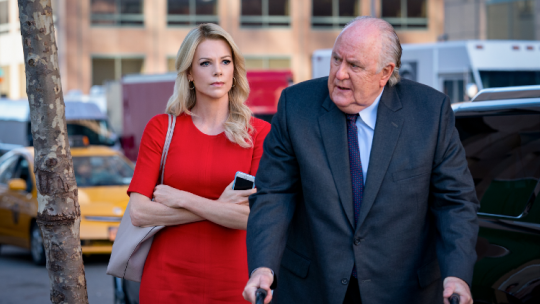
I mentioned last week that Jay Roach’s BOMBSHELL (Lionsgate), starring Charlize Theron, Nicole Kidman and Margot Robbie -- all SAG Award nominees!! -- was going to expand nationwide this weekend, and I’m still hoping to review it sometime this week, but haven’t had a chance to write it just yet. Sorry!
LIMITED RELEASES

Not a lot of limited releases this weekend, thank God, but I do want to draw attention to the Brazilian Oscar entry INVISIBLE LIFE (Amazon), which will get a limited release this weekend. Directed by Karim Aïnouz (Madame Satã), it’s the story of two sisters from Rio who are separated in 1950 as the elder one, Guida, travels to Europe to marry a sailor and is estranged by her parents when she returns alone and pregnant. The younger sister Euridice is forced into a loveless marriage, and the two of them end up living their lives unaware that the other is still living in Rio. The movie takes a little time to get going, but once it does, it’s quite an emotional experience, especially the last act where Oscar nominee Fernanda Montenegro takes over one of the roles. Invisible Life won the Un Certain Regard at Cannes earlier this year, but sadly, it did not make the shortlist in the Oscar’s International Film category, which is a shame. It will open at the Film Forum in New York Friday, as well as the Laemmle Royal in L.A.
It’s actually the only film I’ve seen this week, although the Bollywood action-comedy Dabangg 3 (Yash Raj Films) brings Salman Khan’s badass cop Chulbul Pandy back for his third movie, which should do decently over the holidays.
Xiaogang Feng’s Chinese drama Only Cloud Knows (China Lion) will also open in select cities this Friday about a Chinese man (Xuan Huang) who returns home to New Zealand after the death of his wife and learns that she has all sorts of secrets.s
Irish filmmaker Alexandra (Lotus Eaters) McGuinness’ indie drama-thriller She’s Missing (Vertical Entertainment), starring Lucy Fry and Eiza Gonzalez, playing Heidi and Jane, best friends living in a small desert town, and what happens when one of them goes missing.
STREAMING AND CABLE
Another movie I hoped to review, and I just didn’t get a chance to is this the amazing drama THE TWO POPES, starring Jonathan Pryce and Anthony Hopkins, which will hit the streaming service this Friday. It’s a wonderful film directed by Fernarno Meirelles (City of God) about the relationship between
This Friday, Netflix will also begin streaming the fantasy series THE WITCHER, based on the popular video games and starring Henry Cavil. I really don’t know much about the series, but it looks like the kind of big-scale fantasy I love.
Although the seventh episode of Disney’s series The Mandalorian will air on Weds. this week, as to not conflict with Star Wars: The Rise of Skywalker’s opening. Friday will see the debut of the new Disney+ movie Togo, starring Willem Dafoe and a Siberisan husky named Togo. Don’t know much about it, but Dafoe has been great in recent years, so I’m sure it’s worth watching.
REPERTORY
You’ll notice a lot of the same movies playing in the repertory theaters in New York and L.A. this weekend, maybe because Christmas is next week?
FILM AT LINCOLN CENTER (NYC):
The big retrospective in New York this week is FilmLinc’s comprehensive “Varda: A Retrospective,” which will run from Friday through through January 6, and it is indeed comprehensive, showing all of her films, including four shorts programs and some television work. It ties into the late French filmmaker’s excellent last film, Varda by Agnès, which has been playing there for the past couple weeks. (It’s an exceptional introspective film class that I highly recommend.) If you want a taste of Varda’s work but can’t figure out what to sees then maybe you can check out the free five-part mini-series Agnés Varda: Here to There, each episode screening on the afternoons starting Friday and running through December 24. (Even though it’s free, you still need to go to the FilmLinc site and register for tickets.) The series will include a wide range of films from her part in the early French New Wave to her more recent documentary work, and it’s a slew of riches for those who’ve already seen Varda by Agnès and want to see some of the films discussed.
On Thursday night, FilmLinc will have a special 20th anniversary screening of Steven Soderbergh’s The Limey with Soderbergh in attendance along with cinematographer Ed Lachman and some of his cast.
METROGRAPH (NYC):
“Holidays at Metrograph” continues this week with screenings of Jacques Demy’s The Umbrellas of Cherbourg (1964), Mitchel Leissen’s Remember the Night (1940), The Thin Man (1934) and of course, Todd Haynes’ 2015 film Carol, Paul Thomas Anderson’s 2017 movie Phantom Thread, and Stanley Kubrick’s Eyes Wide Shut (1999), Metro’s holiday standbys. Welcome To Metrograph: Redux will screen Lizzie Borden’s Born in Flames (1983) and Haile Gerima’s Bush Mama (1979) while this week’s Late Nites at Metrographis Eric Rohmer’s Claire’s Knee (1970). This weekend’s Playtime: Family Matineesis the classic It’s a Wonderful Life, in case you haven’t seen one of the 200 showings at IFC Center.
THE NEW BEVERLY (L.A.):
Wednesday’s “Afternoon Classic” is The Bishop’s Wife (1947), starring Cary Grant, while Friday’s “Freaky Friday” matinee is John Carpenter’sThe Thing (1982). Wednesday night’s double feature of National Lampoon’s Christmas Vacation and Scrooged is sold out (of course) but Thursday night, you can see It’s a Wonderful Life (of course) with Brad Pitt’s Meet John Doe. Tarantino’s Reservoir Dogsis the Friday midnight offering while the horror film Christmas Evil screens Saturday at midnight, while the weekend’s Kiddee Matinee is The Muppet Christmas Carol, which shows that even Tarantino can get in the Xmas spirit. Monday’s “Afternoon Classics” matinee is expecting that kiddee’s will be out of school, as it’s screening Harry Potter and the Goblet of Fire, while Tuesday night aka Christmas Eve is a double feature of Bing Crosby’s White Christmas (1954) and Holiday Affair (1949), starring Robert Mitchum. Also on Tuesday are two sold out screenings of the Xmas classic Die Hard (of course), the night screening a double feature with Silent Partner (1978).
EGYPTIAN THEATRE (LA):
The Egyptian’s “Holiday Spirit 2019” series begins with a double feature of Terry Gilliam’s Brazil and Things to Comeon Thursday, then they will screen It’s A Wonderful Lifeon Friday night. (Why not? Every other rep theater is playing it.) Saturday is Kubrick’s Eyes Wide Shut (ditto) and then Saturday’s “Christmas Noir” is 1950’s Backfire on 16mm! Sunday evening is a double feature of the Oscar-winning The Apartment, starring Jack Lemmon and Shirley MacLaine, paired with the 2015 film Tangerine. No, I don’t get it, either.
AERO (LA):
A lot of the same movies are playing here this week including Die Hard(as part of “Greg Proops Film Clumb 2019” on Weds, a double feature of The Thin Man (1934) and Mr. Soft Touch (1949), as part of the “Christmas Noir” series. “Holiday Spirit 2019” continues on Saturday with a double feature of White Christmas and The Holly and the Ivy (1952). Saturday’s midnight movie is The Exorcist III (1990), then Sunday is a screening of Will Ferrell’s 2003 movie Elf, and then Monday might, what else? It’s a Wonderful Life.
QUAD CINEMA (NYC):
On Friday, the Quad is beginning a new series called “A Face in the Crowd: Remembering Lee Remick” including a 40thanniversary restoration of James Ivory’s The Europeanswith Ivory appearing on Friday. The series will also include 1957’s A Face in the Crowd, 1959’s Anatomy of Murder, as well as one of my favorite movies of all time, 1976’s The Omen, and more.Wednesday night’s One-Shots offering is Jean Cocteau’s 1950 film Orpheus.
MOMA (NYC):
Modern Matinees: Iris Barry’s History of Film continues this week with the 1930 film All Quiet on the Western Front Wednesday, 1921’s The Four Horsemen of the Apocalypse on Thursday, and the classic Battleship Potemkin (1921) on Friday. Monday is a double feature of Dream of a Rarebit Fiend from 1906 and Buster Keaton’s The Navigator (1924). Fred Newmeyer’s The Freshman (1925) screens on Tuesday. The Wonders continues through the weekend with its look at the films of Italian sisters Alice and Alba Rohrwacher, including Luca Guadagigno’s I Am Love (2009) on Wednesday evening and other more recent films including Alice Rohrwacher’s 2014 eponymous film The Wonders on Monday night.
IFC CENTER (NYC)
While all the other rep theaters in New York and L.A. have been jumping on the It’s a Wonderful Life bandwagon, the IFC Center has been playing it consistently for weeks with Donna Reed’s daughter Mary Owen introducing many of the screenings. That continues through Christmas Day. Next year, you’ll be able to watch all of the Studio Ghibli movies on HBO Max, but if you can’t wait that long, the IFC Center is celebrating the holidays with “The Films of Studio Ghibli” from Friday through January 16. It’s a pretty comprehensive series including many films not directed by Miyazaki, but there’s a lot of great stuff, and you can click on the link above to see when various movies are playing or check out the full calendar here. (There are a few 35mm prints in there, labelled accordingly.)
Weekend Classics: May All Your Christmases be Noir is … also Stanley Kubrick’s Eyes Wide Shut. Seriously, if you live in New York and still haven’t seen this movie, then I don’t know what your damage is. Waverly Midnights: Spy Games will screen Matt Damon’s The Bourne Identity (2002) and Late Night Favorites: Autumn 2019 is Kubrick’s The Shining (1980), which you also should have seen by now.
FILM FORUM (NYC):
The Film Forum will begin screening its own holiday offering, the 1962 thriller Cape Fear, starring Robert Mitchum and Gregory Peck, through Christmas Eve. The weekend’s “Film Forum Jr.” is a sing-along version of 1954’s White Christmas. Lee Grant will also be at the Film Forum Thursday night to screen her 1981 documetnary debut The Willmar 8.
ROXY CINEMA (NYC)
The Nicholas Cage-a-thon continues Thursday with 1996’s The Rock, directed by a very young Michael Bay, as well as Leaving Las Vegas, for which Cage won an Oscar. On Saturday, you can get in the Xmas spirit with Bill Murray’s Scrooged (1988) and Home Alone (1990).
LANDMARK THEATRES NUART (LA):
This Friday’s midnight offering is Tim Burton’s Beetlejuice (1988).
Next week is Christmas, and there are two new movies in the animated Spies in Disguise (20thCentury Fox) and Greta Gerwig’s Little Women.
0 notes
Text
LUCY AND ANDY GRIFFITH
S6;E8 ~ October 29, 1973
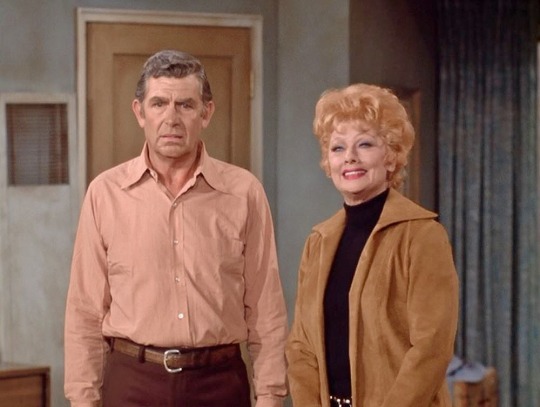

Directed by Coby Ruskin ~ Written by Robert O'Brien
Synopsis
When Lucy meets a charismatic man (Andy Griffith) raising money for underprivileged youth in the park, Kim decides to investigate to see if he's really who he says he is.
Regular Cast
Lucille Ball (Lucy Carter), Gale Gordon (Harrison Otis Carter), Lucie Arnaz (Kim Carter)
Guest Cast
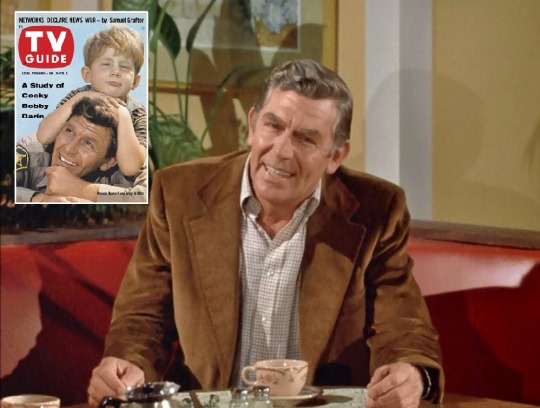
Andy Griffith (Andy Johnson) was a former music teacher. He began his screen career in 1948 on variety shows hosted by Ed Sullivan and Steve Allen. In 1955 he was nominated for a Tony Award for his appearance on Broadway in No Time for Sergeants. He also appeared in the 1958 film version of the play. In 1960 he appeared with Danny Thomas on “Make Room for Daddy” as Sheriff Andy Taylor and the character was spun-off into his own series “The Andy Griffith Show.” He stayed with the show until 1968. That same year he appeared on “The Tennessee Ernie Ford Special” on NBC with Lucille Ball. He also appeared as Andy Taylor on two episodes of “Gomer Pyle: USMC.” In 1971 he starred in “The New Andy Griffith Show” which lasted only one season. He had another hit series in 1986 with “Matlock” which ran until 1995. Griffith died in 2012 at age 86.

Sid Gould (Policeman) made more than 45 appearances on “The Lucy Show,” all as background characters. This is one of his nearly 50 episodes of “Here’s Lucy.” Gould (born Sydney Greenfader) was Lucille Ball’s cousin by marriage to Gary Morton.
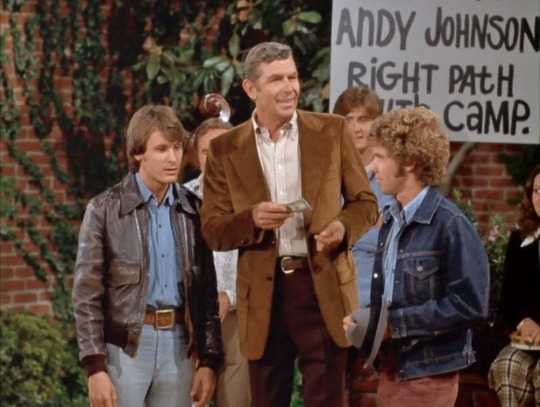
Randall Carver (Henry, left) began his career in 1969 and is best remembered as John Burns on the first season of “Taxi” (1978-79). This is his only appearance with Lucille Ball. He was 27 years old when he appeared in this episode.
Rick Kellman (Jerry, above right) played Lucille Ball and Bob Hope's son in the film Critic's Choice in 1963. He started acting at age 6 and is best remembered for playing Randy in “The Dennis O'Keefe Show” (1959-60) and Tommy in “Our Man Higgins” (1962-63). A year after this appearance on “Here's Lucy” he left show business.
The character's name is not spoken aloud, just listed in the final credits.
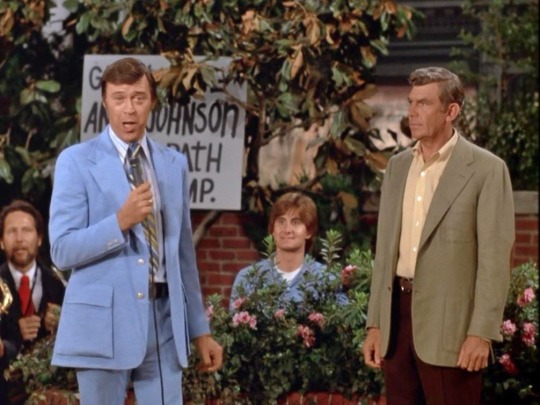
Hank Stohl (Bill Adams) began his career in 1959 and was the voice on the radio on “The Waltons” from 1977 to 1980. This is his only appearance with Lucille Ball.
Bob Whitney (Stage Manager) appeared with Lucille Ball in The Facts of Life (1960). This is the second of his five appearances on the series.
The character has no lines. He tallies the donations on a chalk board at the end of the episode.
Marl Young (Conductor) was the musical director for “Here's Lucy” as well as making several on-camera appearances when the shows included live music.
Vocalists: Nancy La Mar, Rosemary O'Brien, Dave Anderson Stuart, and Marvin Robinson
The musicians and others in the park and restaurant are played by uncredited background performers.

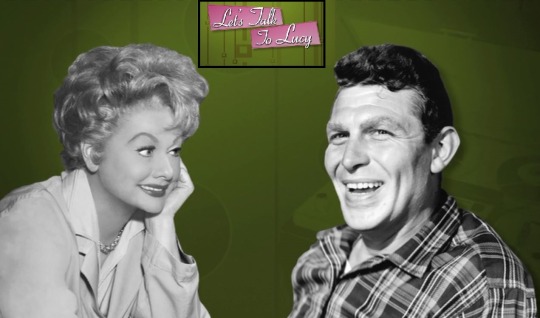
In March 1965, Lucille Ball interviewed Andy Griffith for two installments of her CBS radio show “Let's Talk To Lucy” while he was still playing Sheriff Andy Taylor on TV.
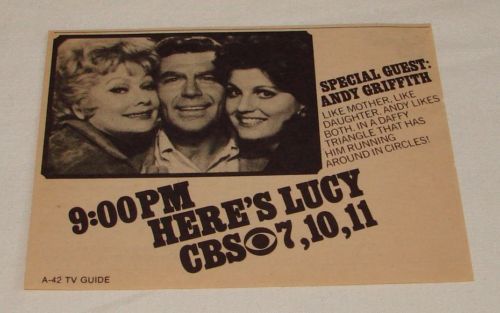
Six Degrees of Lucy! Although none of Lucille Ball's TV incarnations ever came face to face with Sheriff Andy Taylor, they traveled in the same TV world:
In 1959, the year before Andy Taylor met Danny Williams on “Make Room for Daddy”, Danny Williams and family met Lucy Ricardo and family on a 1958 episode of “The Lucy-Desi Comedy Hour.”
Keith Thibodeaux, who played Lucy Ricardo's son, Little Ricky, played Opie's pal Johnny Paul Jason in 13 episodes of “The Andy Griffith Show” between 1962 and 1966.
Gomer Pyle, who lived in Mayberry, joined the Marines and was spun off in his own series “Gomer Pyle USMC” when he made a brief appearance on “The Lucy Show” in 1966.
“The Andy Griffith Show” had a sequel series titled “Mayberry RFD” starring Ken Berry, a protégé of Lucille Ball's who had appeared on “The Lucy Show” in 1968.
All of these shows were filmed on the Desilu backlot (formerly RKO, later Paramount).

Don Knotts, who played Andy Griffith's bumbling sidekick Deputy Barney Fife, guest starred in “Lucy Goes on Her Last Blind Date” (S5;E6). Some other “Lucy” actors who frequently showed up in Mayberry include Hal Smith, Parley Baer, Norman Leavitt, Amzie Strickland, Dub Taylor, Stanley Farrar, Will Wright, Herbie Faye, Jonathan Hole, Byron Foulger, Tol Avery, Reta Shaw, Lurene Tuttle, Ruth McDevitt, Ruta Lee, Jay Novello, Ross Elliot, Maxine Semon, Herb Vigran, and Sid Melton.
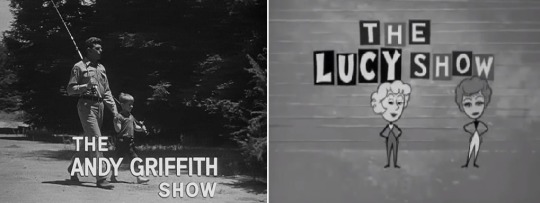
There are some very basic similarities between “The Lucy Show” and “The Andy Griffith Show.”
Both Griffith and Ball used their own first names, which consist of four letters ending in ‘y’ and also appear in the title.
Both characters have spouses that died before the series' begins.
Both have children and faithful sidekicks.
Both started filming in black and white and eventually aired in color.
Both shows ended in early 1968 only to be re-born in the fall as newly-titled shows: “Here's Lucy” and “Mayberry RFD.”
The Christian overtones in this episode are unusual for this series. A few weeks earlier Kim jokingly said that they missed church on Sunday!
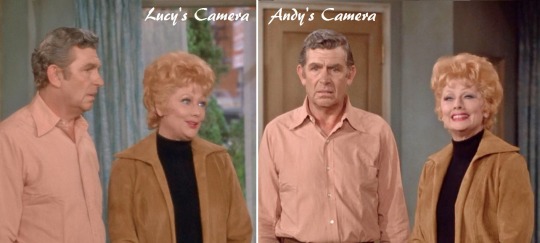
When Lucy and Andy are in the same shot together it becomes visibly clear that Lucille Ball is being filmed by a camera with a filtered lens to soften her look, while the other camera remains unfiltered. The contrast is especially noticeable when Lucy is standing next to Andy in the motel room and goes in and out of soft focus depending on which camera angle is used.
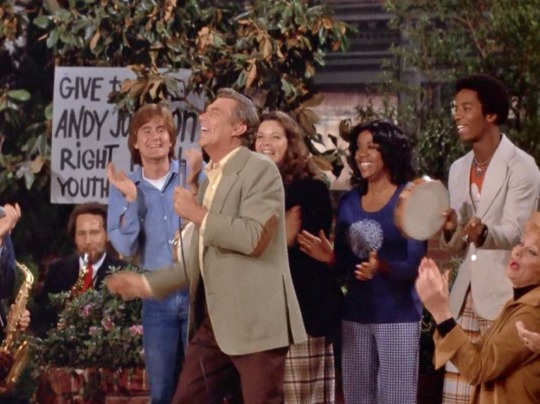
The show opens with Andy and his back-up singers performing “I'll Fly Away” by Albert E. Brumley. First published in 1932 it has been called the most recorded Gospel song of all time. Andy passes the hat for donations for his Right Path Youth Camp in Northern California – only getting thirty eight cents.

At a local restaurant, Andy Johnson tells Lucy that after he came out of the service he became a Sheriff. Lucy responds with disbelief: “A Sheriff!” Although he had left the role of Sheriff Taylor in 1969, Griffith would play him again in the 1986 TV movie “Return to Mayberry.” He would play another Sheriff on “Adams of Eagle Lake,” a 1975 police drama that lasted just two episodes on ABC. The two episodes were later issued on DVD under the titles “Deadly Game” and “Winter Kill.”
Andy tells Lucy his fiancee Alice ran off with his best man Charlie.
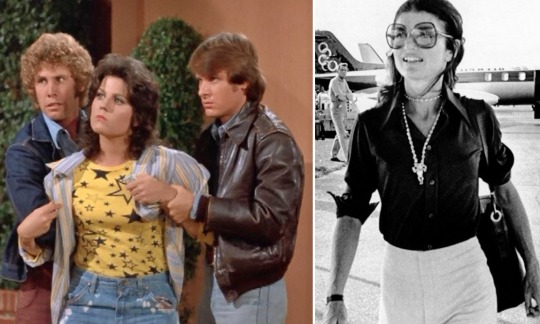
Dressed in her downmarket blue jeans, Kim says “What do I look like? Jackie Onassis.” Jacqueline Lee Bouvier Kennedy Onassis (1929-94) was first mentioned in “Lucy Visits the White House” (TLS S1;E25) in 1963, when she was First Lady of the United States. She married Greek millionaire Aristotle Onassis in 1968.

On Bill Adams' TV show, Andy and his singers perform “I'm Gonna Write a Song” by Jerry Reed and released in 1973. They raise $464.00 for the Right Path Youth Camp – quite a step up from their initial take of thirty eight cents!

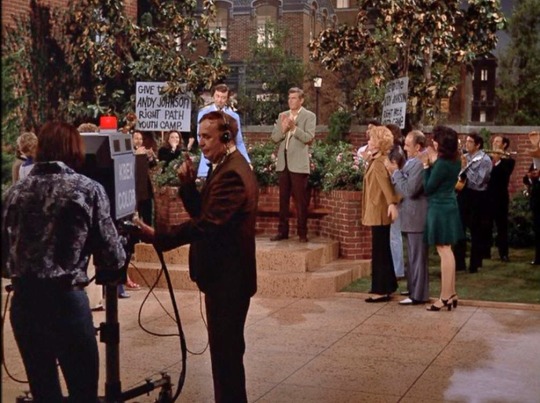
The TV camera is labeled ‘KBEX COLOR.’ KBEX were the call letters for fictional TV and radio stations. They were used in many TV shows and films, including in Desilu’s “Mannix” and “Mission: Impossible.” They were first used on “Here’s Lucy” in “Lucy Is Really in a Pickle” (S5;E15) and most recently in "Lucy, the Wealthy Widow" (S6;E4). Starting in 2005, the FCC (Federal Communications Commission) started using KBEX for actual broadcast stations. Similarly, the 555 telephone exchange is used exclusively for fictional numbers seen in films and television. Here, the telethon number on the chalkboard is 555-8732.

Lucy Ricardo also meet a charity organization in a public park in “Lucy's Last Birthday” (ILL S2;E25). They were called The Friends of the Friendless.
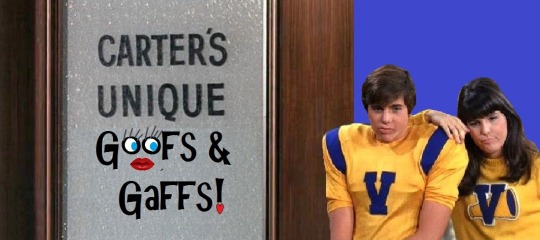
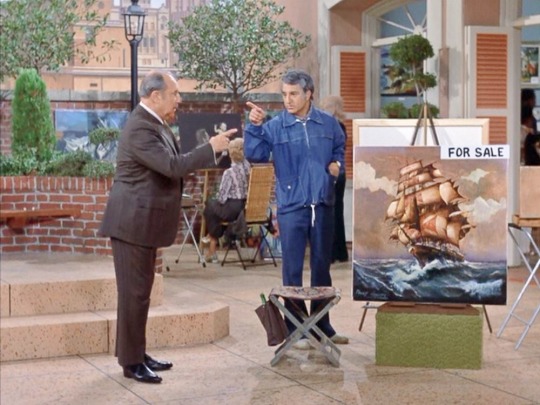
Recycling! The exterior plaza where Andy sings in the first scene is the same one used for the gallery courtyard in “Lucy and Danny Thomas” (S6;E1). The red booth in the restaurant also makes the rounds. It has been seen many different restaurants throughout the series.
Character Consistency! Lucy says that Kim works for a talent agency. In “Kim Cuts You-Know-Whose Apron String” (S3;E24) she said she worked for a Public Relations firm.

“Lucy and Andy Griffith” rates 1 Paper Heart out of 5
This is an unusual and awkward episode – not funny or serious. The chemistry between Andy and Lucy is given short shrift in favor of Kim's suspicions about his veracity. When she allows Andy (an older, single man from out of town) to bring her to his run-down motel room things just get weird. Then he turns her over his knee and spanks her with his slipper, and things turn from weird to uncomfortable. This sort of thing might have passed for funny in 1953, but not in 1973. She leaves the room through a window (luckily they were on the first floor) after writing on the mirror in shaving cream “You are a nice man.” Huh? There's also an undertone of religion (gospel songs, mentions of 'the Lord'), something that Lucy meticulously avoided throughout her television career. The only exception to this unpleasantness is the brief scene where Lucy schools Andy in how to relax on television. This must have been something that Lucille Ball did when coaching young actors as part of the Desilu Playhouse. There are so many ways Andy Griffith could have been used on “Here's Lucy,” but this seems the least satisfactory showcase for his talents.

#Here's Lucy#Lucille Ball#Lucie Arnaz#Gale Gordon#Andy Griffith#Sid Gould#Coby Ruskin#Bob O'Brien#Randall Carver#Rick Kellman#Hank Stohl#Bob Whitney#Marl Young#Nancy La Mar#Rosemary O'Brien#Dave Anderson Stuart#Marvin Robinson#The Andy Griffith Show#Mayberry RFD#I'll Fly Away#Gospel Songs#Jackie Onassis#I'm Gonna Write a Song#KBEX#1973#CBS#TV
4 notes
·
View notes
Photo
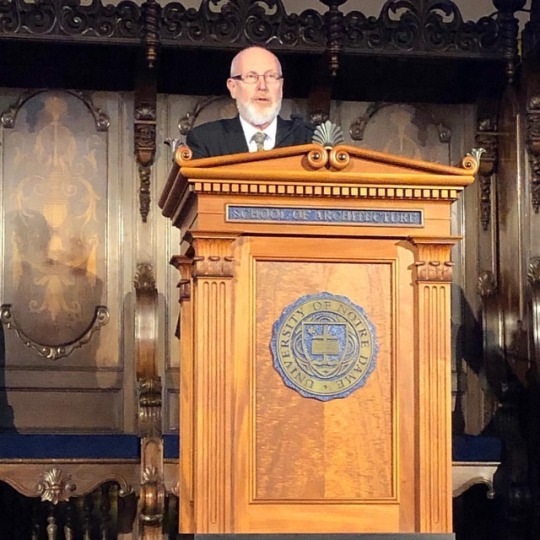
Today I proudly received the Henry Hope Reed Award and gave a talk about my work to date at the Driehaus Museum in Chicago. #driehausprize #henryhopereedaward #notredameschoolofarchitecture #chicago #carllaubin #traditionalarchitecture #classicalarchitecture (at The Richard H. Driehaus Museum) https://www.instagram.com/carllaubin/p/BvXhW4_A7t0/?utm_source=ig_tumblr_share&igshid=9u0a63c06xff
#driehausprize#henryhopereedaward#notredameschoolofarchitecture#chicago#carllaubin#traditionalarchitecture#classicalarchitecture
0 notes
Text
Gwendolyn Brooks
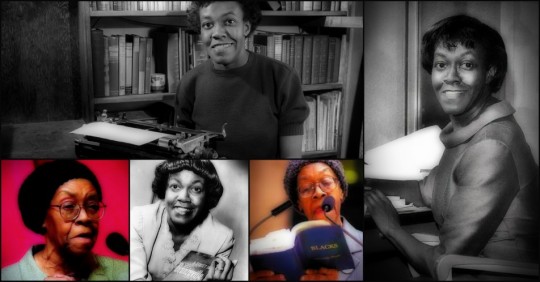

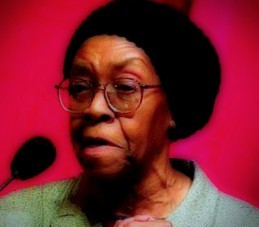

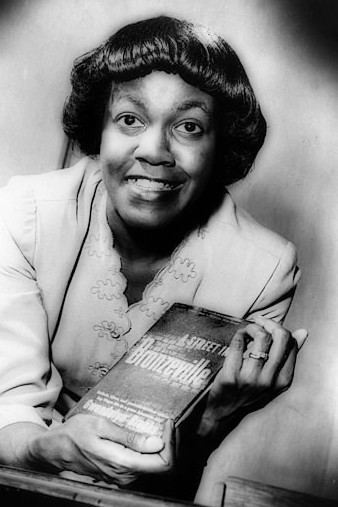

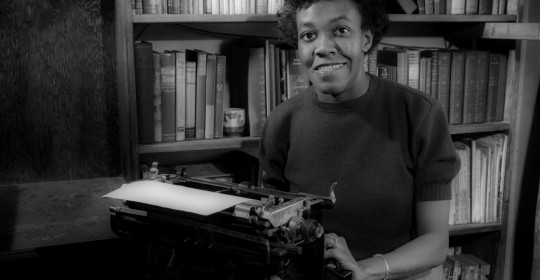
Gwendolyn Elizabeth Brooks (June 7, 1917 – December 3, 2000) was an American poet, author, and teacher. She was the recipient of many awards for her work and influence; including the Pulitzer Prize for Poetry on May 1, 1950, making her the first African American woman to receive that award.
Throughout her career Brooks received many more honors. She was appointed Poet Laureate of Illinois in 1968, a position held until her death, and Poet Laureate Consultant in Poetry to the Library of Congress in 1985.
Early life
Gwendolyn Elizabeth Brooks was born on June 7, 1917, in Topeka, Kansas, and died on December 3, 2000 in Chicago, IL. She was the first child of David Anderson Brooks and Keziah (Wims) Brooks. Her father was a janitor for a music company who had hoped to pursue a career as a doctor but sacrificed that aspiration to get married and raise a family. Her mother was a school teacher as well as a concert pianist trained in classical music. Family lore held that her paternal grandfather had escaped slavery to join the Union forces during the American Civil War.
When Brooks was six weeks old, her family moved to Chicago during the Great Migration; from then on, Chicago remained her home. According to biographer Kenny Jackson Williams, Brooks first attended a prestigious integrated high school in the city with a predominantly white student body, Hyde Park High School, transferred to the all-black Wendell Phillips High School, and then moved to the integrated Englewood High School. After completing high school, she graduated in 1936 from Wilson Junior College, now known as Kennedy-King College. Due to the social dynamics of the various schools, in conjunction with time period in which she attended them, Brooks faced racial injustice that over time contributed to her understanding of the prejudice and bias in established systems and dominant institutions in her own surroundings as well as ever relevant mindset of the country.
Brooks began writing at an early age and her mother encouraged her saying, ''You are going to be the lady Paul Laurence Dunbar."
After these early educational experiences, Brooks never pursued a four-year degree because she knew she wanted to be a writer and considered it unnecessary. "I am not a scholar," she later said. "I'm just a writer who loves to write and will always write." She worked as a typist to support herself while she pursued her career.
She would closely identify with Chicago for the rest of her life. In a 1994 interview, she remarked on this,
"(L)iving in the city, I wrote differently than I would have if I had been raised in Topeka, KS...I am an organic Chicagoan. Living there has given me a multiplicity of characters to aspire for. I hope to live there the rest of my days. That's my headquarters.
Career
Writing
Brooks published her first poem, "Eventide", in a children's magazine, American Childhood, when she was 13 years old. By the age of sixteen she had already written and published approximately seventy-five poems. She received commendations on her poetic work and encouragement from James Weldon Johnson and later, Langston Hughes, both well-known writers with whom she kept communication with and whose readings she attended in Chicago. At seventeen, she started submitting her work to "Lights and Shadows," the poetry column of the Chicago Defender, an African-American newspaper. Her poems, many published while she attended Wilson Junior College, ranged in style from traditional ballads and sonnets to poems using blues rhythms in free verse.
Her characters were often drawn from the inner city life that Brooks knew well. She said, "I lived in a small second-floor apartment at the corner, and I could look first on one side and then the other. There was my material."
By 1941, Brooks was taking part in poetry workshops. A particularly influential one was organized by Inez Cunningham Stark, an affluent white woman with a strong literary background. Stark offered writing workshops to African-Americans on Chicago's South Side, which Brooks attended. It was here she gained momentum in finding her voice and a deeper knowledge of the techniques of her predecessors. Renowned poet Langston Hughes stopped by the workshop and heard Brooks read "The Ballad of Pearl May Lee." Brooks continued to work diligently at her writing and growing the community of artists and writers around her as her poetry began to be taken more seriously. She and her husband frequently threw parties at their apartment at 623 E. 63rd Street and it was in the kitchenette of that apartment that Brooks hosted a party for her friend and mentor Langston Hughes. Once he unexpectedly dropped in and famously shared a meal of mustard greens, ham hocks, and candied sweet potatoes with Brooks and her husband Henry Blakely.
Brooks' published her first book of poetry, A Street in Bronzeville (1945), with Harper and Row, after strong show of support to the publisher from author Richard Wright. He said to the editors who solicited his opinion on Brooks' work:
"There is no self-pity here, not a striving for effects. She takes hold of reality as it is and renders it faithfully.... She easily catches the pathos of petty destinies; the whimper of the wounded; the tiny accidents that plague the lives of the desperately poor, and the problem of color prejudice among Negroes."
The book earned instant critical acclaim for its authentic and textured portraits of life in Bronzeville. Brooks later said it was a glowing review by Paul Engle in the Chicago Tribune that "initiated My Reputation." Engle stated that Brooks' poems were no more "Negro poetry" than Robert Frost's work was "white poetry." Brooks received her first Guggenheim Fellowship in 1946 and was included as one of the “Ten Young Women of the Year” in Mademoiselle magazine.
In 1953, Brooks published her first and only narrative book, a novella titled Maud Martha, which in a series of thirty-four small vignettes, follows the life of a black woman named Maud Martha in detail as she moved about life from childhood to adulthood. It tells the story of "a woman with doubts about herself and where and how she fits into the world. Maud's concern is not so much that she is inferior but that she is perceived as being ugly," states author Harry B. Shaw in his book, Gwendolyn Brooks. Maud suffers prejudice and discrimination not only from white individuals but also from black individuals who have lighter skin tones than hers, something that is direct reference to Brooks' personal experience. Eventually, Maud stands up for herself by turning her back on a patronizing and racist store clerk. "The book is ... about the triumph of the lowly," Shaw comments.
In 1967, the year of Hughes' death, Brooks attended the Second Black Writers' Conference at Nashville's Fisk University. Here, according to one version of events, she met activists and artists such as Imamu Amiri Baraka, Don L. Lee and others who exposed her to new black cultural nationalism. Recent studies argue that she had been involved in leftist politics in Chicago for many years and, under the pressures of McCarthyism, adopted a black nationalist posture as a means of distancing herself from her prior political connections. Brooks' experience at the conference inspired many of her subsequent literary activities. She taught creative writing to some of Chicago's Blackstone Rangers, otherwise a violent criminal gang. In 1968 she published one of her most famous poems, In the Mecca, a long poem about a mother's search for her lost child in a Chicago apartment building. The poem was nominated for the National Book Award for poetry.
Brooks' second book of poetry, Annie Allen (1950), focused on the life and experiences of a young Black girl as she grew into womanhood in the Bronzeville neighborhood of Chicago. The book was awarded the Pulitzer Prize for poetry; she also was awarded Poetry magazine's Eunice Tietjens Prize.
Her autobiographical Report From Part One, including reminiscences, interviews, photographs and vignettes, came out in 1972, and Report From Part Two was published in 1995, when she was almost 80.
Teaching
Brooks said her first teaching experience was at the University of Chicago when she was invited by author Frank London Brown to teach a course in American literature. It was the beginning of her lifelong commitment to sharing poetry and teaching writing.
Brooks taught extensively around the country and held posts at Columbia College Chicago, Northeastern Illinois University, Chicago State University, Elmhurst College, Columbia University, City College of New York, and the University of Wisconsin–Madison.
On May 1, 1996, Brooks returned to her birthplace of Topeka, Kansas. She gave the keynote speech for the Third Annual Kaw Valley Girl Scout Council's "Women of Distinction Banquet and String of Pearls Auction."
Archives
The Rare Book & Manuscript Library (University of Illinois at Urbana-Champaign) acquired Brooks' archives from her daughter Nora. In addition, the Bancroft Library at UC Berkeley has a collection of her personal papers, especially from 1950 to 1989.
Family life
In 1939, Brooks married Henry Lowington Blakely, Jr. They had two children: Henry Lowington Blakely III, born on October 10, 1940; and Nora Blakely, born in 1951.
From mid-1961 to late-1964, Henry III served in the U.S. Marine Corps, first at Marine Corps Recruit Depot San Diego and then at Marine Corps Air Station Kaneohe Bay. During this time, Brooks mentored his fiancée, Kathleen Hardiman, today known as anthropologist Kathleen Rand Reed, in writing poetry. Upon his return, Blakely and Hardiman married in 1965. Brooks had so enjoyed the mentoring relationship that she began to engage more frequently in that role with the new generation of young black poets.
In the year 1990, her works were given a permanent home when Chicago State University established the Gwendolyn Brooks Center for Black Literature and Creative Writing on campus. On her eightieth birthday, in 1997, Brooks was honored with tributes from Chicago to Washington, D.C. Gwendolyn Brooks died of cancer at her Chicago home on December 3, 2000.
Honors and legacy
1946, Guggenheim Fellow in Poetry
1946, American Academy of Arts & Letters Award
1950, Pulitzer Prize in Poetry
1968, appointed Poet Laureate of Illinois, a position she held until her death in 2000
1976, the Shelley Memorial Award of the Poetry Society of America
1985, selected as the Consultant in Poetry to the Library of Congress, an honorary one-year position whose title was renamed the next year to Poet Laureate
1988, inducted into the National Women's Hall of Fame
1989, recipient, Life Time Achievement Award from the National Endowment for the Arts.
1989, awarded the Robert Frost Medal for lifetime achievement by the Poetry Society of America
1992, awarded the Aiken Taylor Award by the Sewanee Review
1994, chosen as the National Endowment for the Humanities' Jefferson Lecturer, one of the highest honors in American literature and the highest award in the humanities given by the federal government.
1994, Recipient of the National Book Foundations's Medal for Distinguished Contribution to American Letters
1995, presented with the National Medal of Arts
1995, honored as the first Woman of the Year chosen by the Harvard Black Men's Forum
1995, received the Chicago History Museum "Making History Award" for Distinction in Literature
1997, awarded the Order of Lincoln award from The Lincoln Academy of Illinois, the highest honor granted by the State of Illinois
Brooks also received more than 75 honorary degrees from colleges and universities worldwide.
Legacy
1970: "For Sadie and Maud" by Eleanor Holmes Norton, included in Sisterhood is Powerful: An Anthology of Writings From The Women's Liberation Movement (1970), quotes all of Brooks' poem "Sadie and Maud"
1970: Gwendolyn Brooks Cultural Center, Western Illinois University, Macomb, Illinois
1995: Gwendolyn Brooks Elementary School, Aurora, Illinois
1990: Gwendolyn Brooks Center for Black Literature and Creative Writing, Chicago State University
2001: Gwendolyn Brooks College Preparatory Academy, Chicago, Illinois
2001: Gwendolyn Brooks Middle School, Harvey, Illinois
2002: Gwendolyn Brooks Middle School, Oak Park, Illinois
2003: Gwendolyn Brooks Illinois State Library, Springfield, Illinois
2002: 100 Greatest African Americans
2004 Gwendolyn Brooks Park named by the Chicago Park District, 4542 S. Greenwood Ave. Chicago IL 60653
2005: Gwendolyn Brooks Middle School, Bolingbrook, Illinois
2012: Honored on a United States' postage stamp.
Wikipedia
12 notes
·
View notes
Photo

[News] Maurice Culot named 2019 Driehaus prize Laureate/ Carl Laubin given 2019 Henry Hope Reed Award via /r/architecture http://bit.ly/2HjwS5L
0 notes
Text
Chelsea to offer Hazard £300,000 a week - gossip
<!–
Chelsea will offer Eden Hazard close to £300,000 per week as they try to avert interest from other clubs in the 27-year-old Belgium playmaker, whose contract runs until 2020. (Mail)[1]
Barcelona are monitoring Tottenham and Belgium defender Toby Alderweireld, 28, who has a clause in his contract that will allow him to leave for £25m in the summer of 2019 if he has not agreed a new deal. Manchester United are also keen on Alderweireld but are thought to be reluctant to deal with Spurs chairman Daniel Levy. (Independent)[2]
Paris St-Germain could offer France striker Kylian Mbappe, 19, to Barcelona in exchange for playmaker Philippe Coutinho. They are trying to appease their 26-year-old Brazilian forward Neymar, who is said to be unhappy with Mbappe but is close friends with compatriot Coutinho, 25. (El Pais)[3]
Borussia Dortmund have made a bid to challenge Bayern Munich for Bordeaux’s Brazilian striker Malcom. The 21-year-old has been a target for Tottenham. (Sun)[4]
Dortmund fear they could miss out on signing on-loan Chelsea striker Michy Batshuayi on a permanent deal this summer because the 24-year-old Belgian’s impressive form has alerted other clubs. (Kicker, via London Evening Standard)[5]
Chelsea and Manchester United will both try to sign Poland striker Robert Lewandowski – if the 29-year-old can persuade Bayern Munich to release him from his contract, which runs until 2021. (Sky Sports)[6]
Southampton’s English midfielder Harrison Reed says he does not want “to go back to sitting in the stands, training all week and then on a Saturday not being involved” with the Saints. The 23-year-old is on loan at Norwich. (Daily Echo)[7]
<!–
Harry Kane hopes referees will ignore the controversy surrounding Tottenham team-mate Dele Alli, whom former England captains Gary Lineker and Alan Shearer accused of diving against Crystal Palace. (London Evening Standard)[8]
Kane’s former Tottenham boss Andre Villas-Boas says the 24-year-old England international may have to leave in order to win trophies. (Talksport)[9]
Tottenham are set to play the first three or four games of the next Premier League season away from White Hart Lane as the stadium’s redevelopment is completed. (Independent)[10]
Real Madrid striker Cristiano Ronaldo says because he has won “so many beautiful things, I don’t have any more dreams”. (Marca)[11]
Manchester City captain Vincent Kompany said the hard work he put in to overcome persistent injury problems was worth it after his side won the Carabao Cup. (Talksport)[12]
Manchester United midfielder Nemanja Matic has suggested he wants former club Chelsea to overtake Tottenham and finish fourth in the Premier League. (London Evening Standard)[13]
Manchester United striker Romelu Lukaku believes he deserves “more respect”. The 24-year-old Belgium international has scored 98 Premier League goals in 213 appearances. (Sky Sports)[14]
Crystal Palace chairman Steve Parish has given his backing to the club’s ladies’ team, after they applied to join the FA Women’s Championship, the new second tier. (Croydon Advertiser)[15]
Bournemouth striker Jermain Defoe dedicated his North East Personality of the Year award to Sunderland fan Bradley Lowery, who died aged six in July.
<!–
Monday’s gossip column[16]
Why Man City want the Champions League most – Shearer[17]
Best of Monday’s gossip
Former Arsenal striker Thierry Henry says he would be “interested” in succeeding Arsene Wenger as manager of the north London club. (Sky Sports)[18]
Chelsea are the frontrunners to sign Bayern Munich striker Robert Lewandowski. The 29-year-old Poland international wants to move to the Premier League. (Sun)[19]
Liverpool manager Jurgen Klopp is looking at Bournemouth’s 21-year-old English midfielder Lewis Cook as a possible £20m replacement for 24-year-old Germany international Emre Can, whose contract runs out in the summer. (Sun)[20]
Chelsea and Barcelona are both tracking 19-year-old France Under-21 forward Yann Karamoh, who is on loan at Inter Milan from Caen. (Mirror)[21]
References
^ (Mail) (www.dailymail.co.uk)
^ (Independent) (www.dailystar.co.uk)
^ (El Pais) (elpais.com)
^ (Sun) (www.thesun.co.uk)
^ (Kicker, via London Evening Standard) (www.standard.co.uk)
^ (Sky Sports) (www.skysports.com)
^ (Daily Echo) (www.dailyecho.co.uk)
^ (London Evening Standard) (www.standard.co.uk)
^ (Talksport) (talksport.com)
^ (Independent) (www.independent.co.uk)
^ (Marca) (www.marca.com)
^ (Talksport) (talksport.com)
^ (London Evening Standard) (www.standard.co.uk)
^ (Sky Sports) (www.skysports.com)
^ (Croydon Advertiser) (www.croydonadvertiser.co.uk)
^ Monday’s gossip column (www.bbc.co.uk)
^ Why Man City want the Champions League most – Shearer (www.bbc.co.uk)
^ (Sky Sports) (www.skysports.com)
^ (Sun) (www.thesun.co.uk)
^ (Sun) (www.thesun.co.uk)
^ (Mirror) (www.mirror.co.uk)
BBC Sport – Football
Chelsea to offer Hazard £300,000 a week – gossip was originally published on 365 Football
0 notes